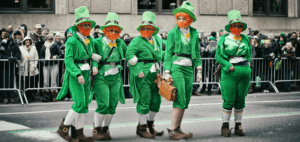The Children of Lir: A Fascinating Irish Legend
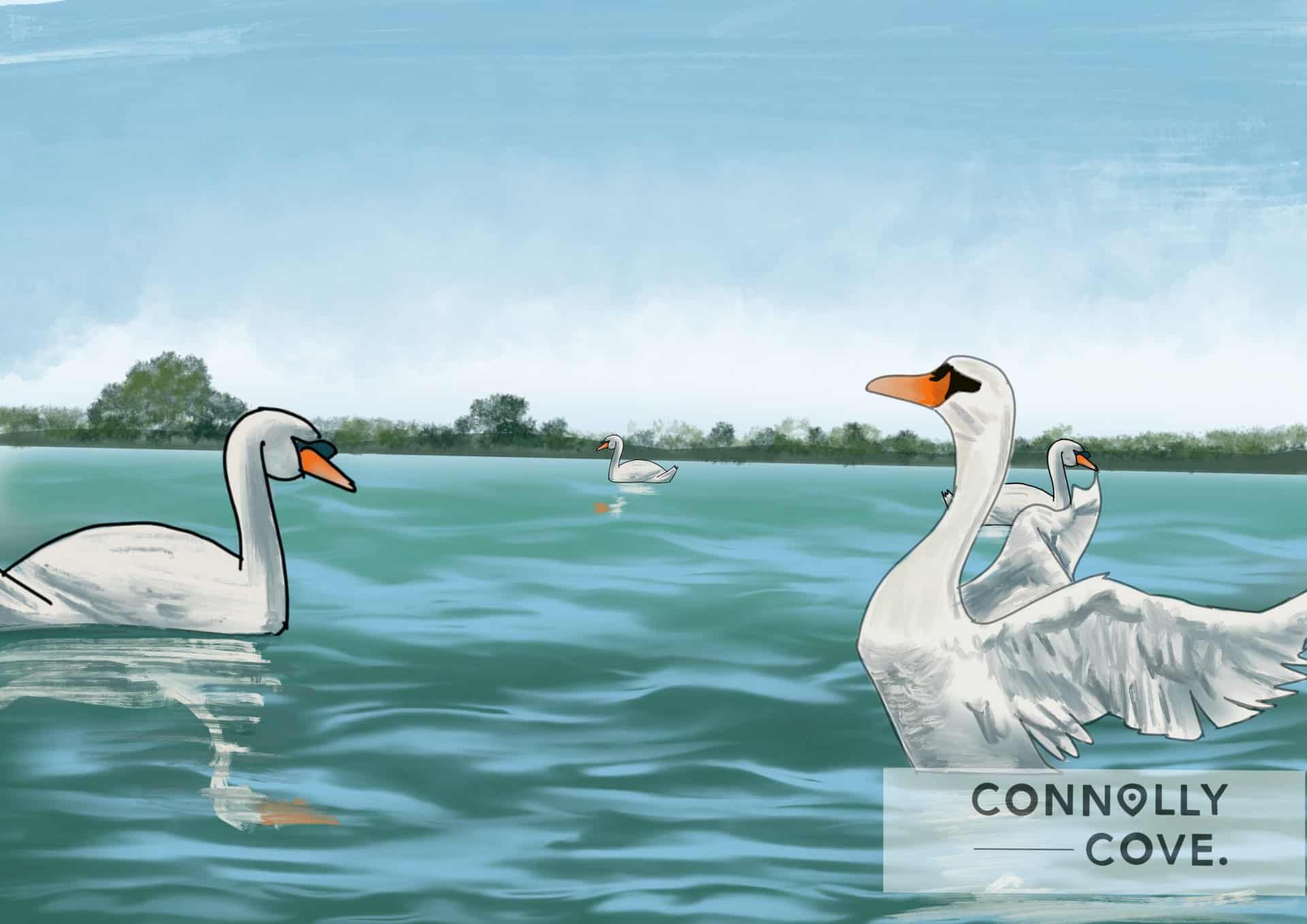
Updated On: April 13, 2024 by Ciaran Connolly
If you enjoy learning about Irish history, you’ll be thrilled after exploring The Children of Lir. Even though the story is gloomy, The Children of Lir is one of the most renowned myths throughout human history.
The Children of Lir legend is a must-know story that will pique your curiosity for history, mythology, and Irish culture. The legend is an amusing ancient fable and an essential part of ancient Celtic mythology. It is one of the most significant and beloved myths of all time.
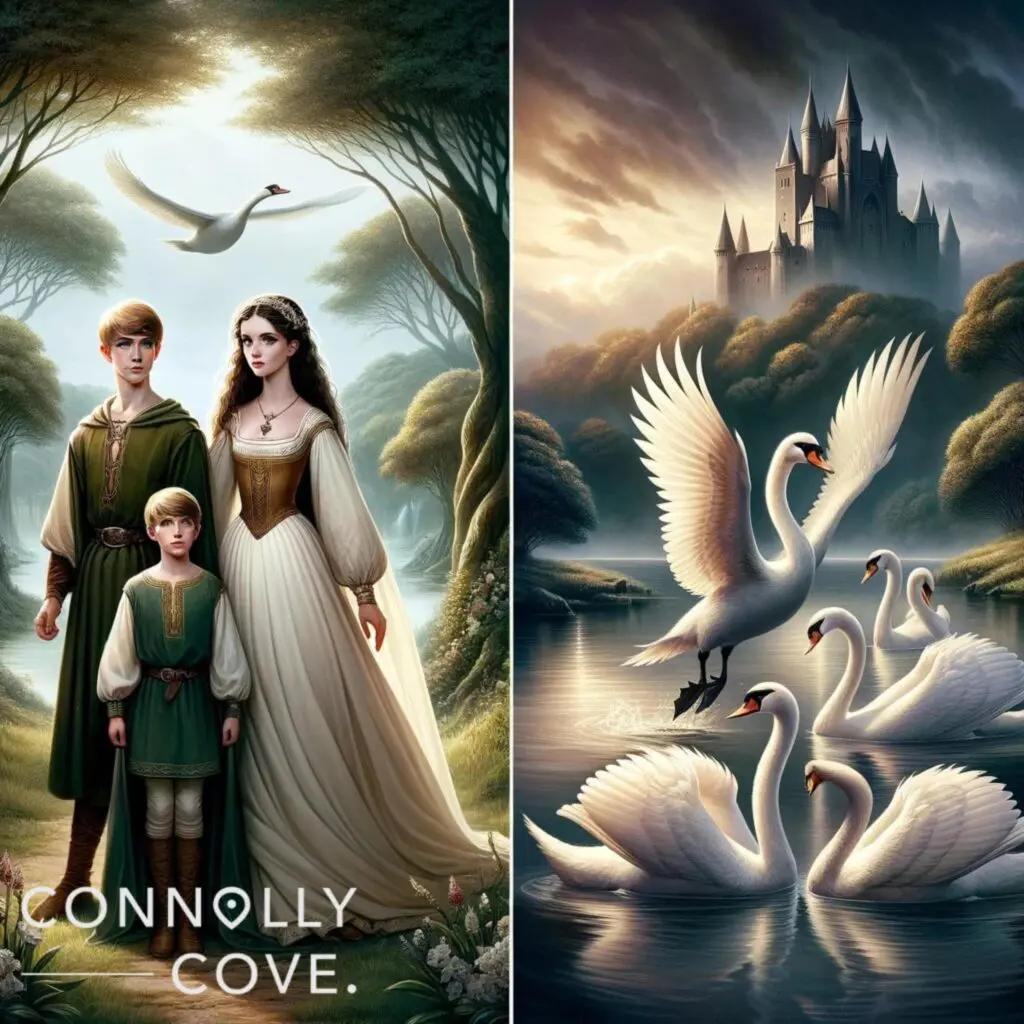
Due to the legend’s fame, many versions of the story of The Children of Lir exist. The Celts did not keep written records of their mythological tales, so the story was told by word of mouth for centuries before it was recorded. We will cover the “canonical” ending and some popular variations here.
In this article, we delve into the fascinating Celtic legend of The Children of Lir. Scroll down to read through the blog, or click on one of the highlighted sections below to jump ahead!
Table of Contents
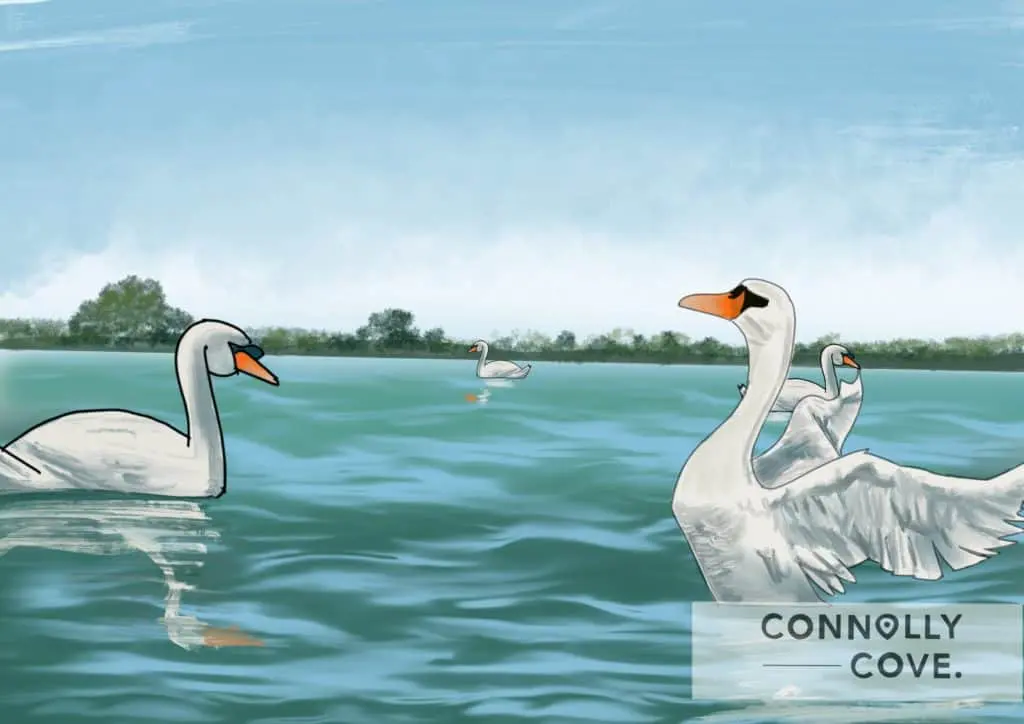
Why are Mythological Stories Important?
Although the stories are from a long time ago, mythology is not irrelevant in today’s world. Early myths and legends were significant elements that helped to form and shape modern culture. They provide rich insight into how our ancestors saw the world around them. Through ancient legends, we can explore how people in the past lived, thought, and interacted with each other.
Many countries have their ancient mythology. These mythologies often form a solid part of the country’s culture. Stories were told and eventually written down to explain the origin of the world, the universal experiences of mankind, and an attempted reason explaining the chaos of the natural world.
Even in modern times, many mythological stories remain popular. As a result, you have probably heard of the mighty Thor from Norse mythology, Hades, the Greek God of the Underworld, Ra the Egyptian God of the Sun, or even the tale of Romulus and Remus, the two brothers raised by wolves who founded the city of Rome.
Each of these cultures was polytheistic and used mythology to explain the world around them. These Ancient Gods were often responsible for creation, nature, love, war and the afterlife.
A lesser-known but equally impressive pantheon of Gods belongs to Celtic mythology. The pantheon is called the Tuatha de Danann (Tribe of the Goddess Danu), and they feature in much of Irish mythology, including in the Children of Lir.
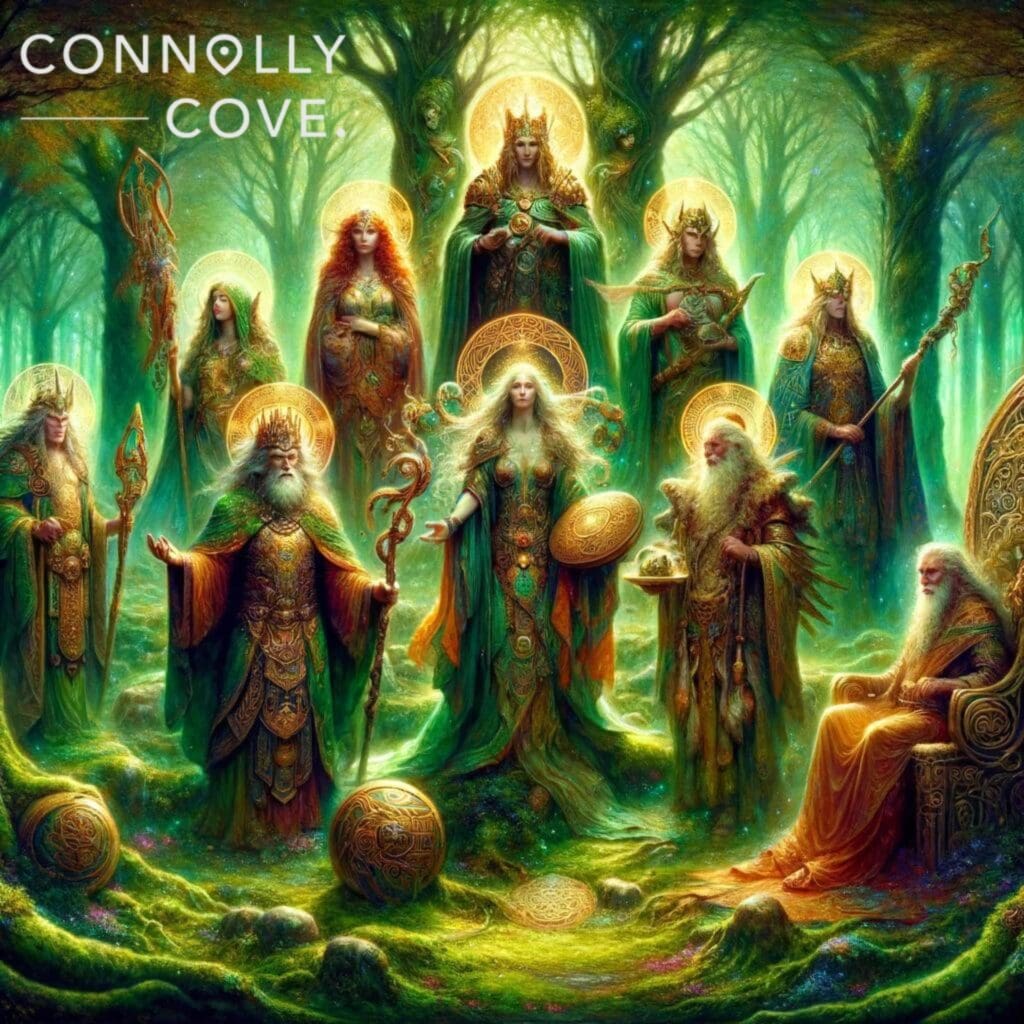
A Brief Background on Celtic Mythology
Celtic mythology is similar to many other mythologies you’ve heard of before, including ancient Greek and Egyptian mythology. Mythologies are a series of myths and folklore stories originating in a specific region or culture. Most share similarities and feature characters like gods, monsters, and supernatural mortals.
Celtic mythology contains many fables and legends. Some of the most famous tales include Finn MaCcool and The Giant Causeway, The Tale of Oisin in Tir Na Nog, The Legend of Pookas, The Frenzy of Sweeny Tales, and The Children of Lir.
Most mythological legends feature a lesson from which the audience is meant to learn. The lesson or moral behind tales in Celtic mythology can be challenging to decipher. None is more widely debated than in the Children of Lir.
Irish Mythology and Legends
The ancient history of Ireland is full of exciting and mysterious legends and myths. If you have ever been to the island of Ireland, you will see the impact of mythology in place names such as the Giants Causeway.
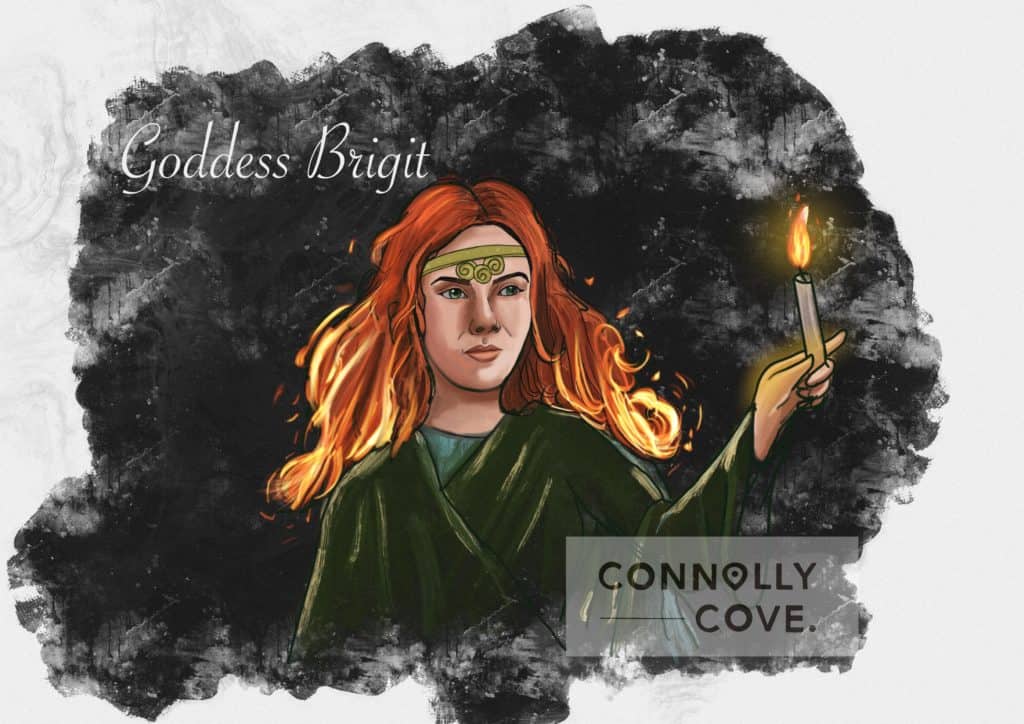
The emergence of Christianity and the fact that monks were the first to record Celtic tales have created many Christian myths with distinct Celtic elements. These stories include Saint Patrick banishing demons from Croagh Patrick, casting out snakes (who were important beings to pagan druids) from Ireland, and even Saint Brigid’s magical cloak.
There are countless Irish legends; however, some of them have risen to international popularity, like the tales of The Children of Lir and Saint Patrick. Some people claim that there is a connection between the two legends. However, all of the Irish stories have various twists and endings.
Because the stories were told over centuries without being written down, there are now more than a few versions of each legend. However, the main plots of the stories have stayed the same. The story of the children of Lir has gained admiration from many artists throughout the years and has developed many interpretations.
The Cycles of Irish Mythology
The people of Ireland have always been famous for their remarkable imagination. It’s no wonder why Irish mythology is full of extraordinary stories full of supernatural powers, gods, and more. The mythology of Ireland is, in fact, not limited to short stories like the Children of Lir whatsoever.
The story of the Children of Lir plays a significant part in the history of Irish myths, but there are cycles to these mythologies. They are a bit more complex than just a set of stories. The cycle of Irish mythology embraces a wide range of stories and characters. Each story and character fit into one of the four primary cycles.
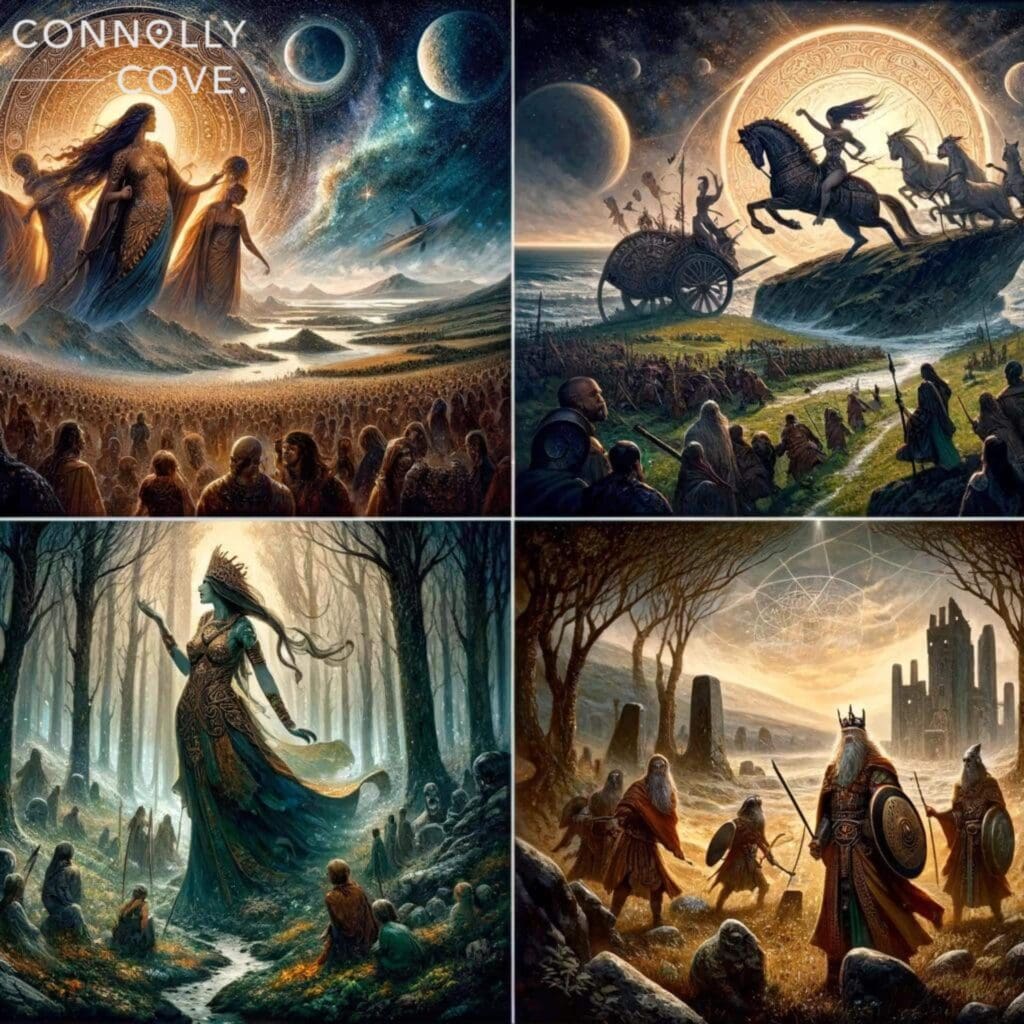
These cycles are divided into the following: mythological cycle, Ulster cycle, Fenian cycle, and King cycle. Each cycle induces different types of worlds. Consequently, every world has its characters, stories, values, morals, and beliefs.
They are never the same as one another. However, interestingly, some characters exist in more than one cycle.
Before diving into the details of each cycle, we’ll learn about its distinctiveness. Later, we’ll learn which cycle holds the legend of the Children of Lir and to which cycle each character belongs.
Understanding Each Cycle in Irish Mythology
The Mythological Cycle
The Mythological Cycle, also known as the “Cycle of the Gods,” is the earliest recorded cycle of Irish mythology. It focuses on the mythic origins of Ireland and its supernatural inhabitants. This cycle primarily features stories of the Tuatha Dé Danann, a group of supernatural beings believed to have inhabited Ireland before the arrival of humans.
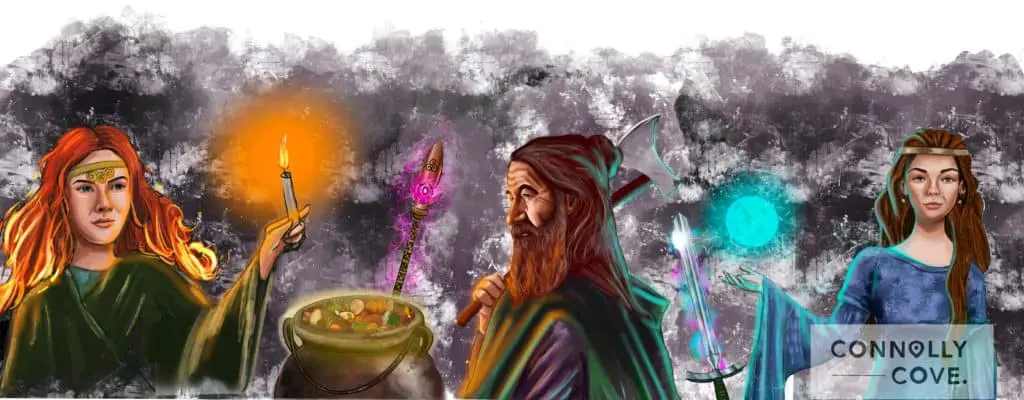
The Ulster Cycle
The Ulster Cycle, also known as the “Cycle of the Red Branch,” is a collection of heroic legends centred around the kingdom of Ulster, particularly during the reign of King Conchobar mac Nessa. These stories are set in the region of Ulster (present-day Northern Ireland).
The Ulster Cycle is characterised by its focus on individual heroism, warrior culture, and the concept of “honour-price.” Central themes include loyalty, heroism, and the tragic fate of heroes bound by their codes of honour and destiny.
The Fenian Cycle
The Fenian Cycle, also known as the “Cycle of Finn,” is a collection of tales about the legendary figure of Fionn mac Cumhaill (Finn McCool) and his band of warriors known as the Fianna. The Fenian Cycle often features themes of adventure, romance, and the pursuit of wisdom.
It includes tales of hunting, warfare, and encounters with supernatural beings such as the Fianna’s nemesis, Aillen the Burner, and the magical hounds of the Otherworld.
The King Cycle
The King Cycle, also known as the “Historical Cycle,” is a collection of tales focusing on legendary kings and rulers of early medieval Ireland. These stories often blend historical events with mythological elements and explore the role of kingship and rulers’ duties and responsibilities.
These stories explore themes of leadership, justice, and the interplay between mortal rulers and the supernatural forces that shape their destinies.
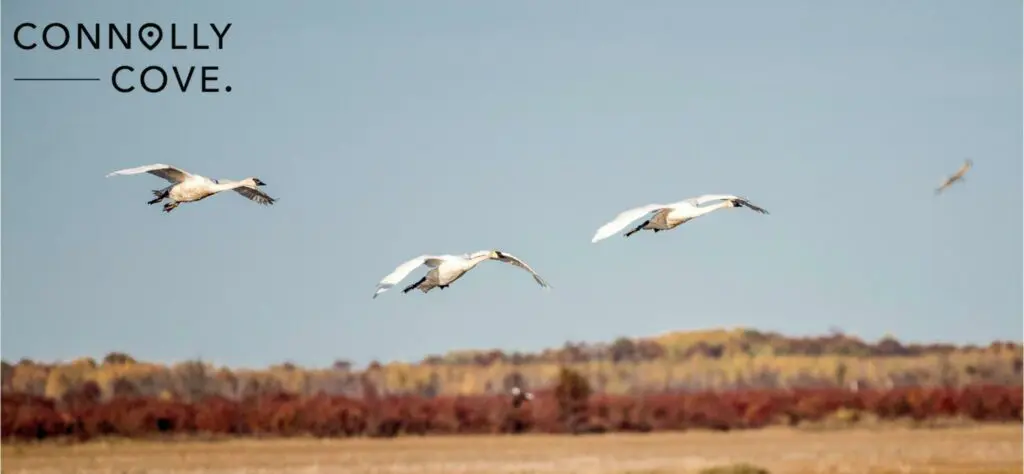
The Legend of The Children of Lir
The Children of Lir is one of Ireland’s most famous legends; many of us were told the poignant story in school. It is a sensational yet sad short story that impacts all who hear it. It has even managed to change how Irish people see and treat swans. Ireland is famous for having quite a few mythologies that played a role in forming new rituals.
The story takes place in the context of The Tuatha de Danann realm and starts with the death of Dagda, the king of the Tuatha de Danann. The council gathers to vote for a new king. The sea god, Lir, was expecting to be the next in line and was furious when he was not chosen. He stormed out and refused to swear loyalty to the new king.
Bodhbh Dearg, the new king, wanted to win Lir’s support, so he arranged a marriage between Lir, who had been widowed, and one of his daughters. Lir married Bodhbh’s eldest daughter, Aoibh (pronounced Eva), and they both had a happy life.
The couple had four children: one girl named Fionnuala and three boys named Aodh, Conn, and Fiachra. It is believed that the four children were fantastic and charming. Sadly, this happy family did not last for long; Aoibh got sick and died a few days later.
You might expect that Lir’s and Bodhbh’s feud arose after this, but that couldn’t be further from the truth. The two men were both grief-stricken and loved the family Aoibh left behind too much to pursue their rivalry.
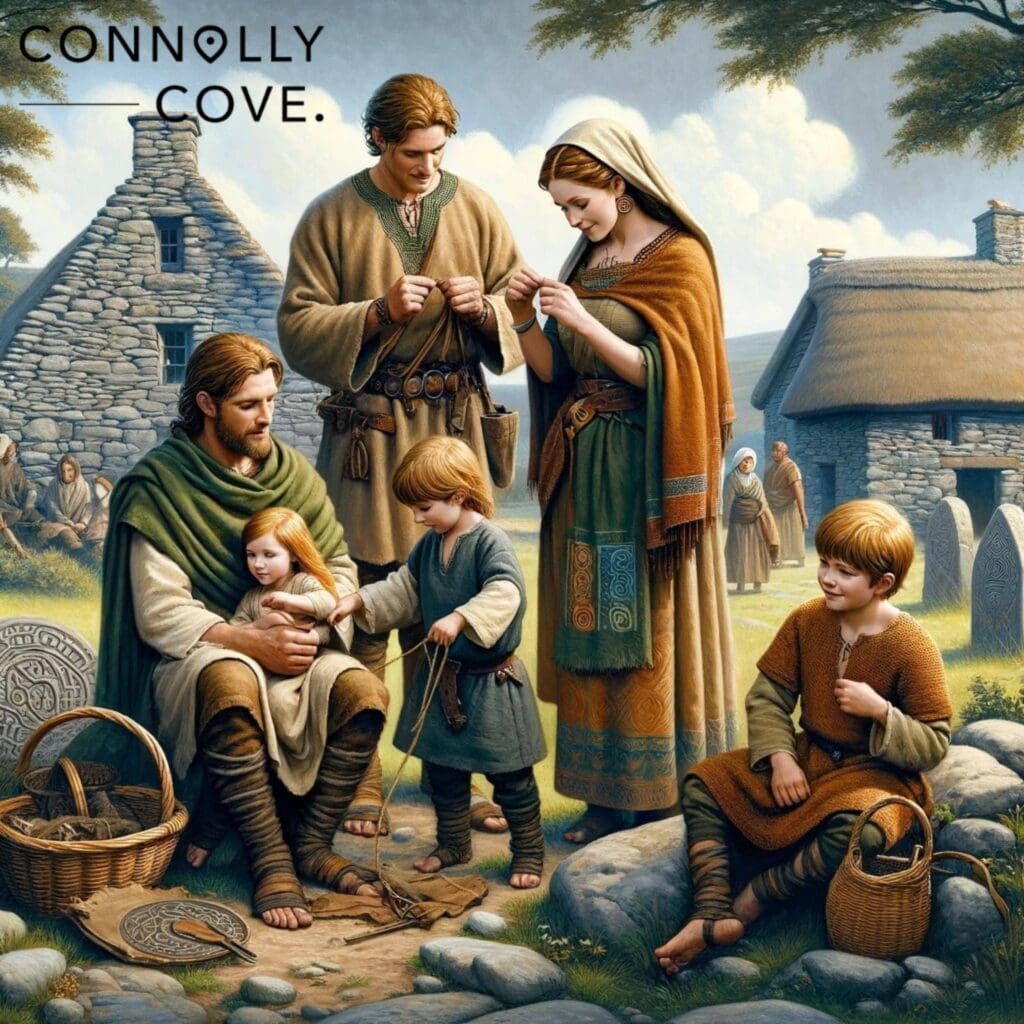
The New Mother
After the death of Aoibh, Lir and his children were miserable; the children were suffering from grief and in need of someone to fill their mother’s role in their lives. Their grandfather, King Bodhbh, arranged another marriage between Lir and one of his other daughters to solve this.
Lir married Aoife, Aoibh’s sister, and the picture of the happy family reappeared again. The children loved Aiofe as their new mother, but jealousy started to brew beneath the surface.
Aiofe realised Lir was devoted to his children, but she felt he didn’t care about her. She became envious of the fact that her stepchildren belonged to Aoibh and not her. Consequently, the children’s new caring mother became a hating and bitter enemy.
She began forming a plot to get rid of Lir’s children. Aiofe made many attempts to exclude them from Lir’s life. She had convinced herself that Lir could only truly love her if her sister’s children were not in the picture.
Jealousy Succeeds
Full of hatred, Aiofe ordered all of her servants to kill the children, but they refused. They were shocked and disgusted by her true nature. After much effort, she took a sword and snuck into their chambers while they were sleeping to kill them. But she couldn’t do it.
Even though she couldn’t kill the children herself, she was still determined to separate them from their father. She had one last idea: to get rid of Lir’s children. She took the children camping and told them to swim in a lake near their castle. While they were swimming, she used a magical wand and cast a spell on the children that turned them into swans.
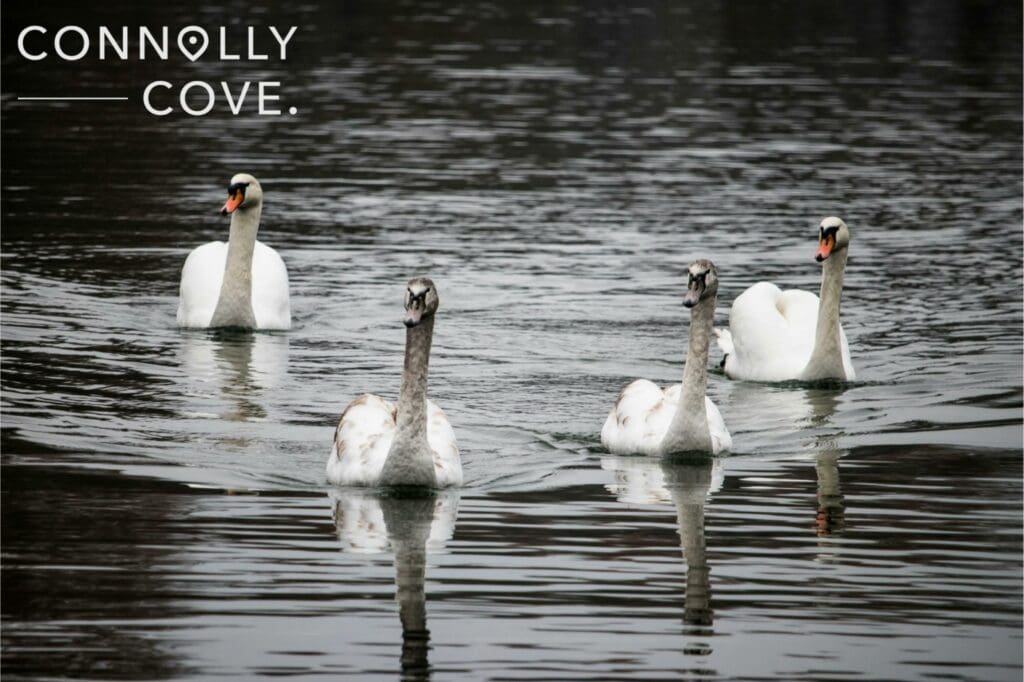
The Children of Lir’s fate
Although she cursed the four children of Lir and turned them into Swans, Aiofe gifted them the ability to talk and sing. In reaction, the daughter, Fionnuala, cried and asked her when their curse would end. Aiofe replied by saying that no other power on earth could remove the curse, but the curse would end after they spent 900 years living across Ireland:
Firstly, they lived for 300 years in the lake near the castle. Then, the children spent another 300 years in the Sea of Moyle. The final 300 years were spent on the Isle of Inish Glora.
After the news of what Aiofe had done spread to his castle, Lir ran to the lake to see the fate of his cursed children. He cried in grief, and his swan children started to sing for him until he fell asleep. Then, he headed to Bodhbh’s castle to tell him of the curse. Bodhbh ordered Aoife to transform herself into an air demon, which she remains today.
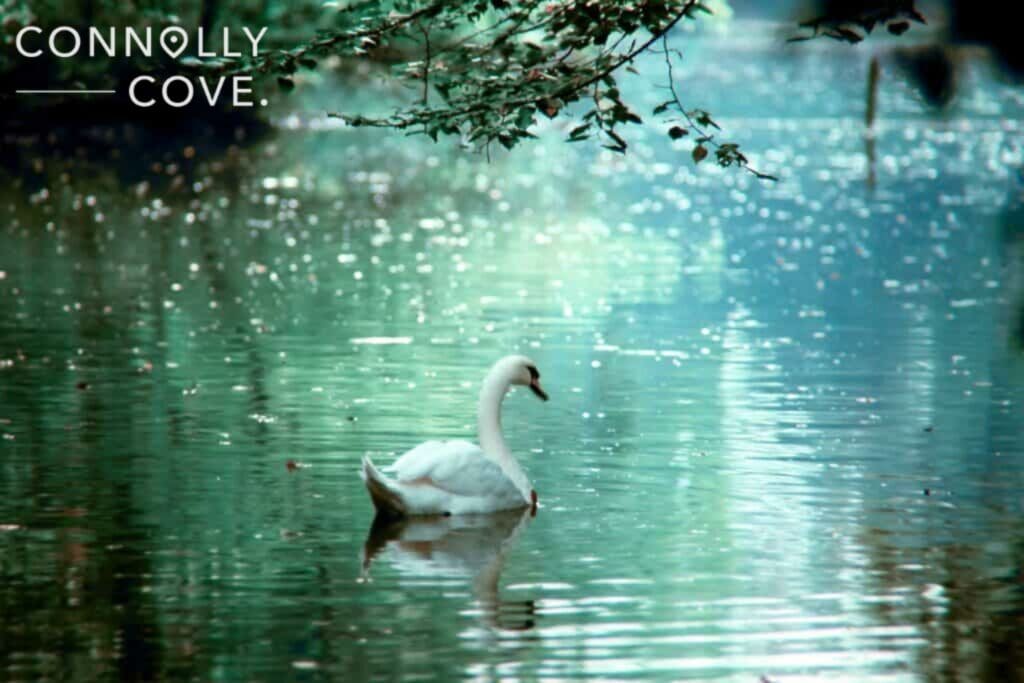
The Singing Swans
For 300 years, the Children of Lir lived in the Derravaragh lake, where they were not isolated from people. Bodhbh, Lir, and people from all across Ireland frequently visited the swans to listen to their beautiful voices.
In some versions of the story, their father and grandfather lived by the lake. Either way, after 300 years, the children left the lake and headed alone to the Sea of Moyle. For their protection, the king issued a law that no one was ever allowed to harm a swan.
The Swans’ new home was dark and cold. They felt very isolated in the Sea of Moyle. However, some locals liked to listen to them sing and would keep them company. They spent the final 300 years of the curse on the Isle of Inish Glora. The Isle of Inish Glora is a small, isolated island where the conditions were even worse for the four swans.
Finally, after spending 900 years cursed and transformed into swans, the children of Lir returned home to their father’s castle. However, when they arrived, they found only the wreckage and remnants of the castle. They knew that their father had passed.
The Uncertain Ending of the Children of Lir
What happens after the children realise their father is dead varies the most among the many versions of the Children of Lir’s legend. However, the most renowned ending was that the four swans continued to fly across the island of Ireland in grief.
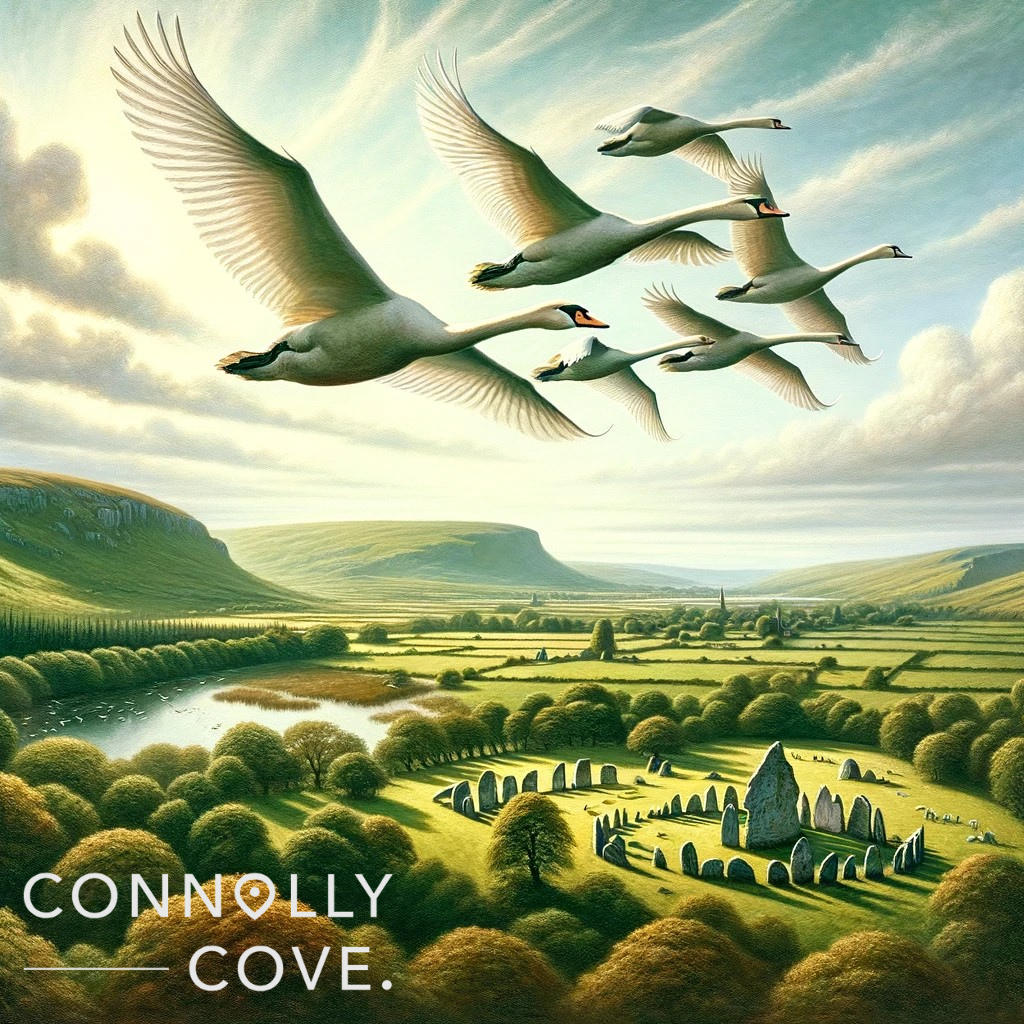
Then, when the Princess of Connacht heard their story, she sent her suitor to bring the children of Lir to her. When the guards found the swans, they shed their feathers and returned to their human forms. However, they did not return to young children as they once were; they transformed into old figures who had aged hundreds of years.
Later, as Christianity arrived in Ireland, a new version of the legend was told. In this iteration, the four swans met a Christian monk. In some versions, this monk was St. Patrick, who had arrived in Ireland to spread Christianity. The children asked the monk to baptise them since they felt that their death was close, and he did. Hence, this was the fate of the Children of Lir.
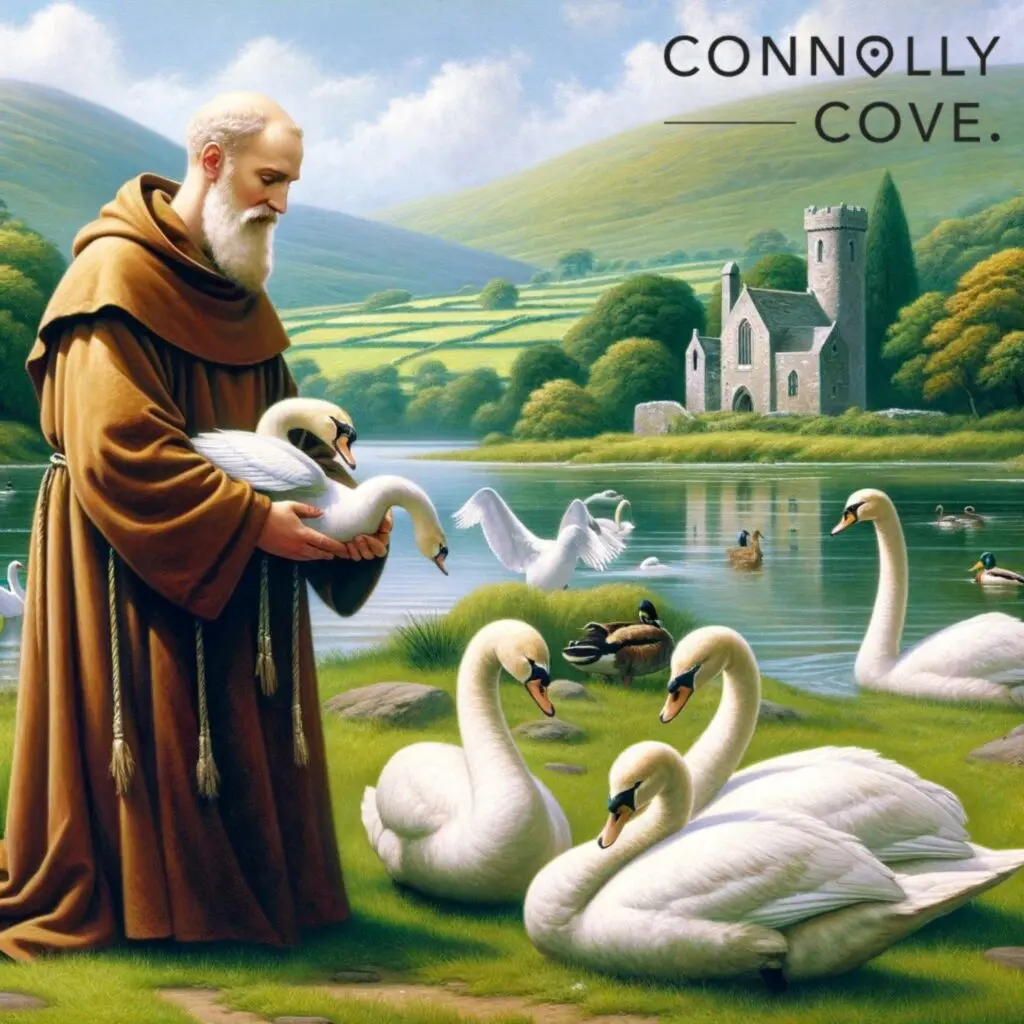
The Different Endings of The Children of Lir Legend
Most ancient stories in Irish mythology face the fortune of undergoing slight changes. The legend of the Children of Lir was no exception. The repetition of the story has included changes throughout the years; however, the story’s actual ending remains mysterious.
Several versions of the tale exist today, making it difficult to know which ending is the actual finale. The only similarity between all the versions is that the ending was not a happily ever after. Here are some of the most common alternate endings:
The First Ringing Bell in Ireland (The First Version)
In one version, Aoife stated that the spell would break once Ireland’s first Christian bell rang. The story tells of Lir finding his children and spending his life at the lake protecting swans. He remained a good and caring father to his swan children until he died.
For the first three hundred years of their spell, Lir lived by Lake Derravaragh with them. He enjoyed spending time with his children, listening to their enchanted voices while they sang. Maybe this symbolised learning to be happy with life changes, even after a loss.
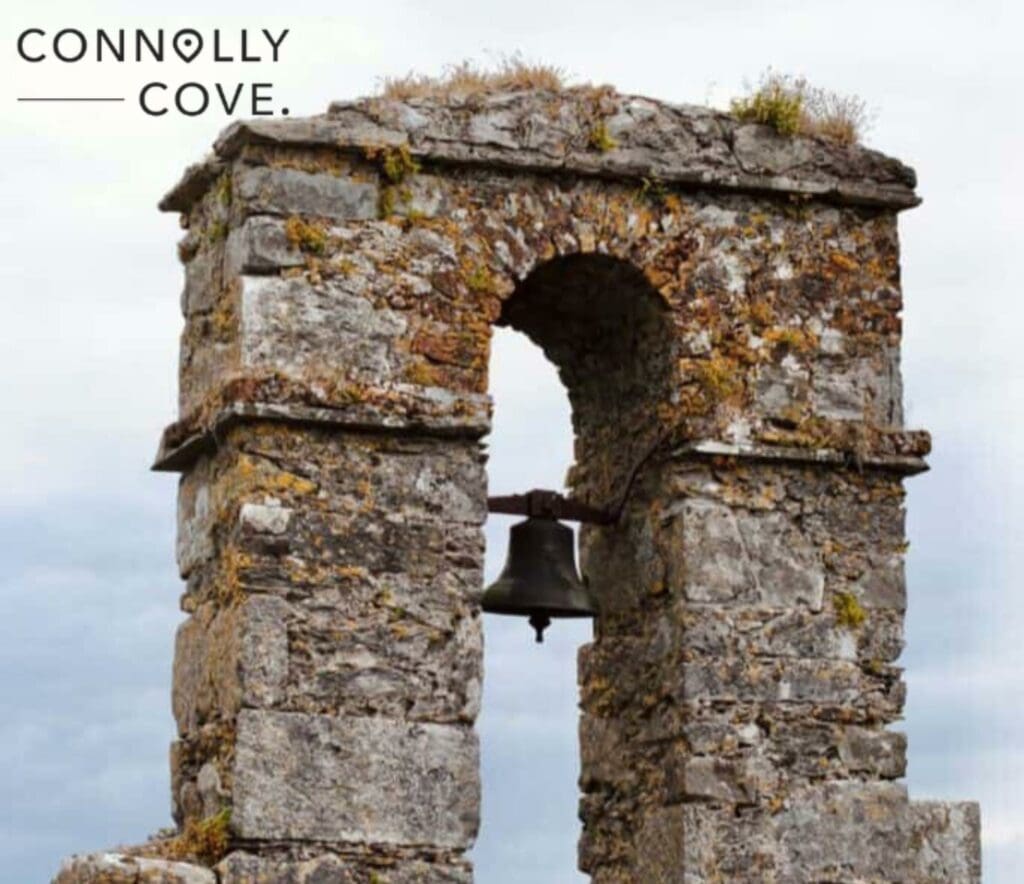
Lir and his children spent many happy years together until the spell’s rules forced them to leave the lake. Then, it was time for them to say goodbye to their father and go for the Sea of Moyle.
Throughout the 300 years the swans spent in the Sea of Moyle, they faced some of their toughest challenges. However, they survived the fierce storms and endured the wounds they got by supporting each other. Sadly, they were separated more than a few times but eventually reunited permanently.
Shortly, it was time for them to travel once again. Together, they followed their destiny and flew to the Isle of Inish Glora. It was the last destination where they would live before the spell broke. The children spent 300 more years on the isolated island.
One day, they heard the first Christian bells ringing from the first church in Ireland. That was when they knew that the spell was about to be broken. By the time the curse lifted, their father had passed on, and the castle in which the children of Lir lived was nothing but ruins.
Caomhog, the Holy Man
The children of Lir, or, more precisely, the swans, followed the sound of the bell until they reached a house near the lake by their father’s castle. That house belonged to a holy man called Caomhog. He cared for the four swans during the last days of their spell.

Unfortunately, things did not go as the swans planned. An armoured man appeared at the house, claiming he was the King of Connacht. He said he ventured to the house after hearing about the swans and their beautiful voices. He wanted to take them away and threatened to burn down the whole city if they refused to follow him.
As soon as he stretched his hands out to grab them, the bells rang for the second time. This time, it was a call for the spell to break. The swans were about to return to their original forms as children, the beautiful children of Lir.
The king became startled and fled away. The children thought the curse was finally broken, but their happy ending turned into a tragedy when the children started ageing rapidly. They were ancient, over 900 hundred years old.
Caomhog, the holy man, watched as the children of Lir aged. He realised that they were only a few days, or even hours, away from death. In consequence, he baptised them so they would die faithful believers. That was the end of the children of Lir, but their legend lived on forever.
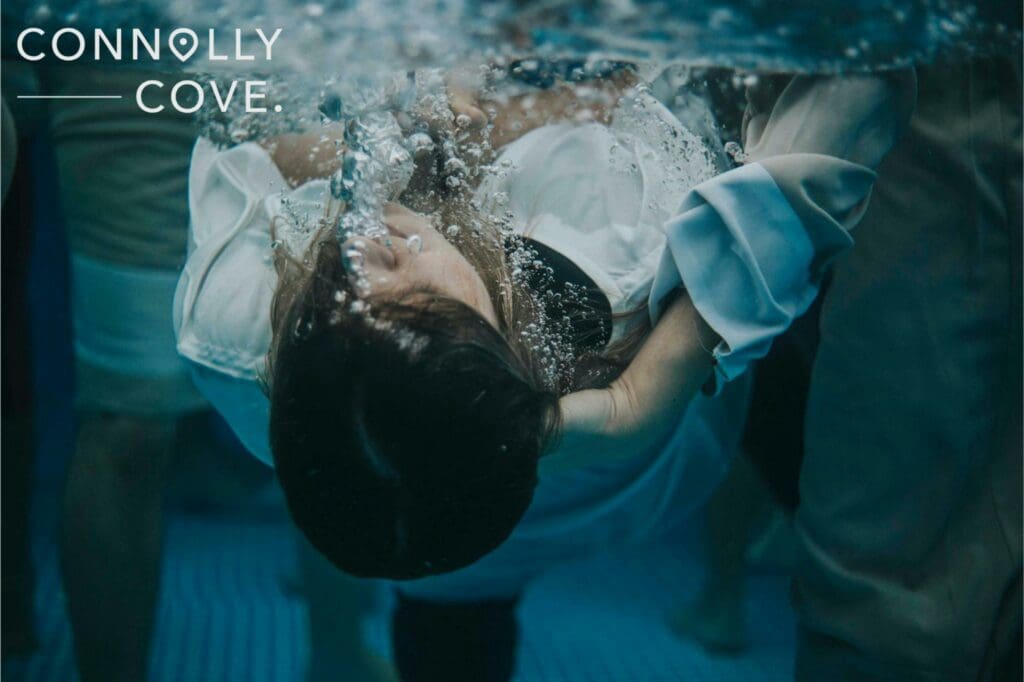
The Blessings of the Priest (The Second Version)
In this version of the tale, the details of how the children of Lir had spent their days on the three different waters remain the same. Where it differs from the original legends is how their curse was broken. When they reached the house where a monk lived, he took care of them. This monk was probably still Caomhog, the Holy Man. He was also known as Mochua in some versions.
The children asked the monk to transform them back into their human forms. The spell broke when the priest agreed to their request, so he changed them to their previous forms. Still, this version did not provide the happy ending the children hoped for.
Once the swans were transformed back into their human forms, they were so old that they died nearly instantly. In a lighthearted turn, this version tells of them meeting their parents in heaven and living there happily ever after.
The Marriage of a King and a Queen (The Third Version)
The story of the Children of Lir is so confusing; nobody is sure how it ended! In another variation, when Aoife casts her spell on the children, Fionnuala asks her when they will be children again. Aoife responded that they would never return to their human forms unless a king from the north married a queen from the south.
The Marriage Came True
Most of the story’s details remain the same throughout the plot of this variation. But in this version, another king showed up to take the swans instead of the king of Connacht. This time, it was the King of Leinster, Lairgean. This king married Deoch, the daughter of the King of Munster.
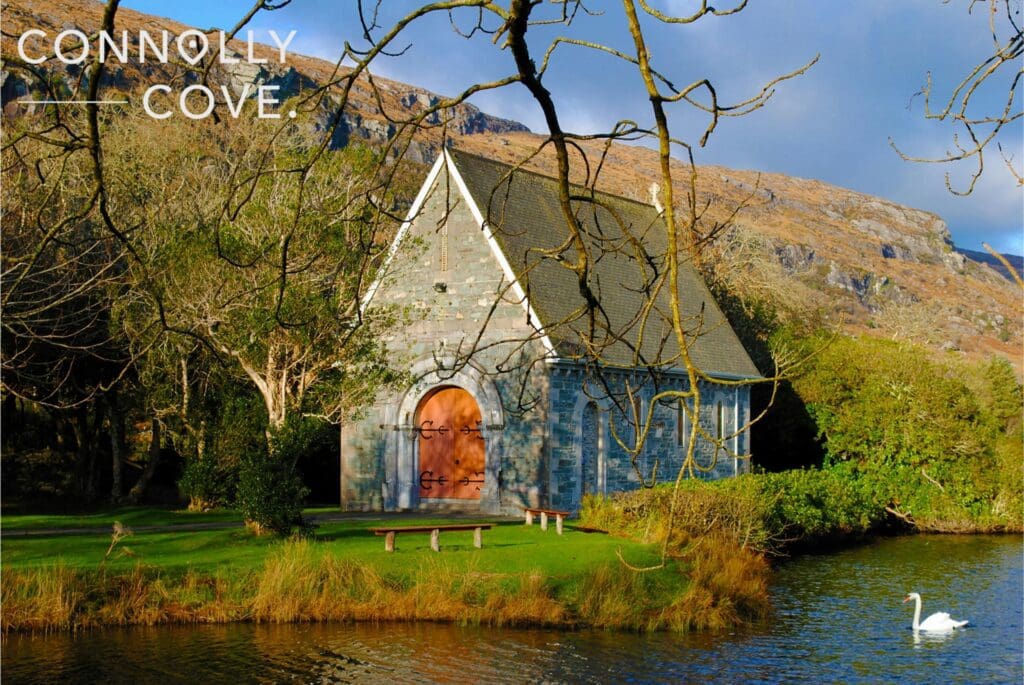
Deoch heard about the beautiful singing swans that lived on a lake by the monastery. She wanted them and asked her husband to attack the monk’s home and capture the swans. Lairgean, the King of Leinster, did as his wife asked.
He seized the swans, which were chained together. Suddenly, the silver chains that connected the four swans broke open. They were finally free and transformed back into human beings, back to being the beautiful children of Lir. But again, they aged rapidly to over 900 years old, so they died.
The True Ending Remains Mysterious
Interestingly, many people in Ireland are familiar with the different endings of the Children of Lir story. Each Irish child heard the story with a different ending, but at least they knew that the spell had to break one way or another.
The Relation between the Prominent Characters of the Children of Lir and Other Legends
The story of the Children of Lir involves more than a few characters who are considered deities in the Celtic mythos. Besides the four children of Lir, there were other characters whose appearances are vital to the story.
Even if their roles do not cause dynamic changes in the plot, they are essential nonetheless. Besides, some of the characters had connections with other famous characters that did not appear in the story of the Children of Lir. However, they were popular in Irish mythology as well.
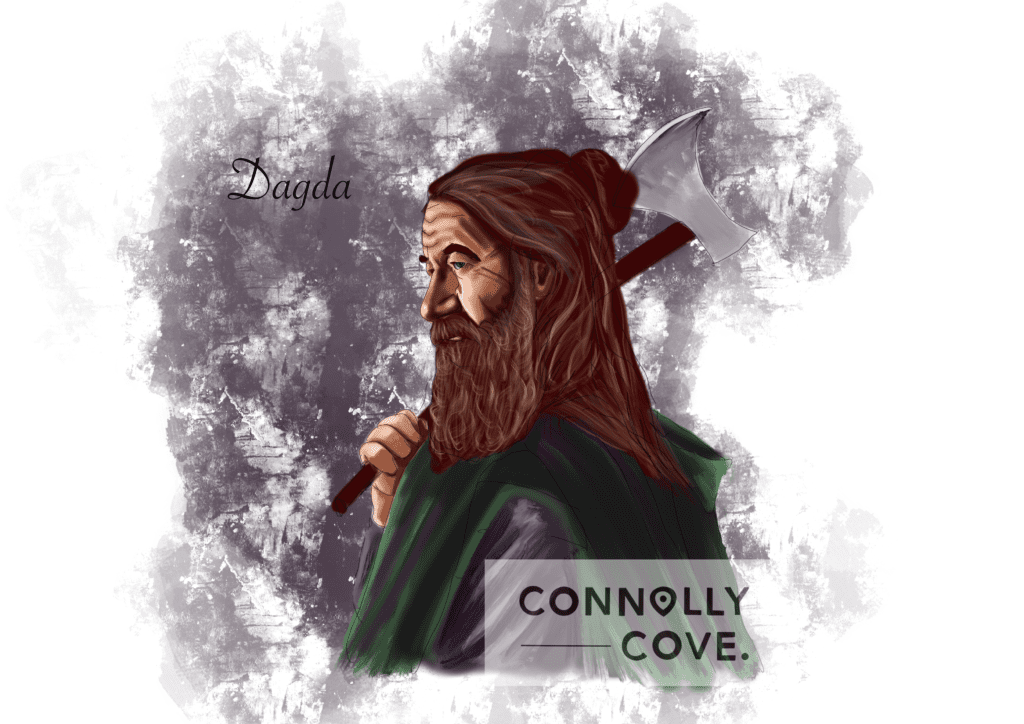
Lir
Lir plays a prominent role in the story—his name is even used in the story’s title. It was almost assumed that Lir would be king after the battle the Tuatha De Dannan had, but it was Bodhbh Dearg who took over, partly because he is one of the Dagda’s children. Lir feels he is the worthy successor, but Bodhbh gets the title because of his lineage.
In the story of the Children of Lir, the sea god was a great example of how a loving and caring father should be. He devoted his life to his children even after they transformed into swans. According to Irish mythology, Lir lived during the last days of the Tuatha De Dannan before they went underground to the Otherworld and became the fairy folk of Ireland.
Irish mythology always connects Lir with the hill of the white field. He is a holy character whose name comes associated with the white field, which is, in turn, connected to a sea. This sea builds a connection between Lir and the god of the sea, Manannán Mac Lir (Manannán son of Lir).
Some sources state that Lir was the personification of the sea while Manannan was the sea god, but others state that there were both sea gods.
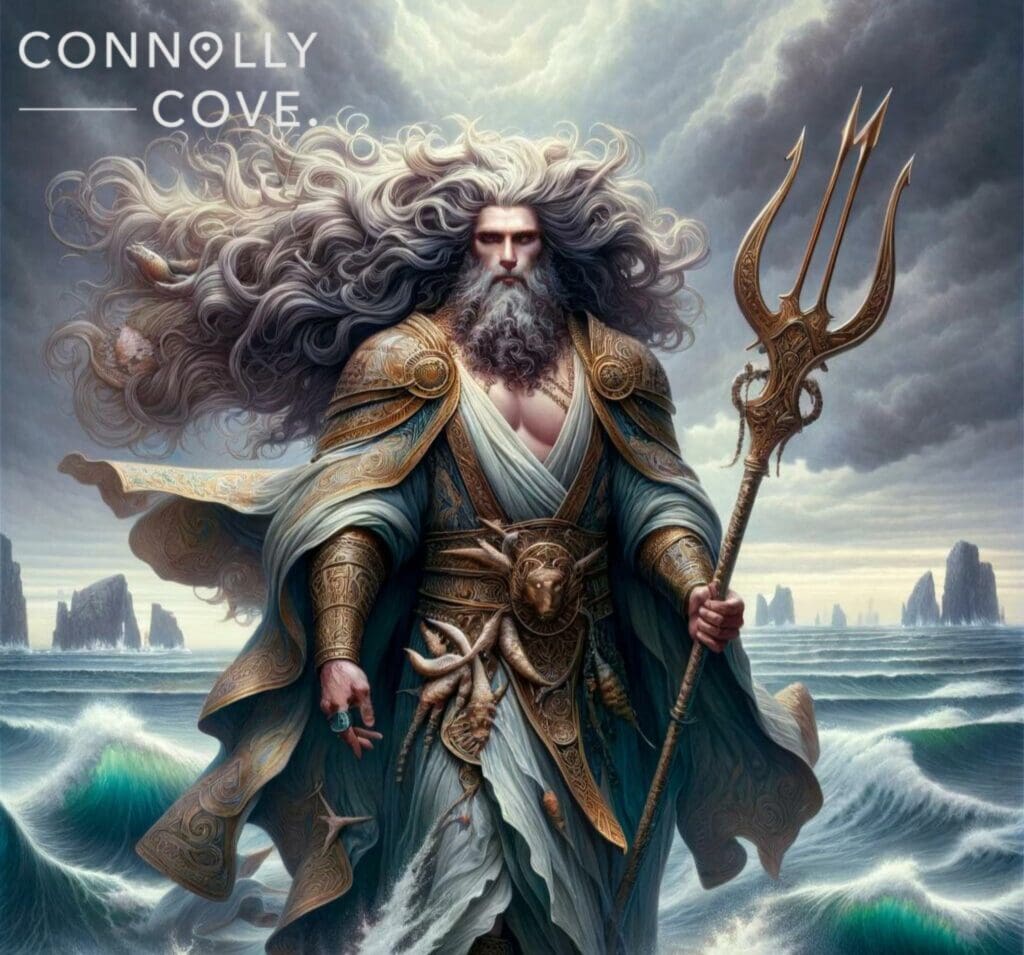
Manannan, the God of the Sea
Manannán is the name of the God of the sea. Sometimes, people refer to it as Manannán Mac Lir. “Mac Lir” means the son of Lir. That is why there was a connection between Lir and the god of the sea.
People say that he was the son of Lir, which would make him the half-brother of the four children of Lir. Manannan is a divine figure in Irish mythology. It was the blessing associated with certain races of ancient Ireland, including Tuatha de Dannan and the Fomorians.
Manannan appears in all four cycles of Irish mythology. Although he doesn’t appear in many tales, he is an essential part of the Irish legends.
Manannan’s Magical Items
Manannan became popular for possessing more than a few items with mystical properties. These items were all magical and played significant roles in the ancient tales of Ireland. Cormac Mac Airt was a High King during ancient times and was probably the most famous. Most of the Irish legends even attach themselves to his existence.
One of the items that Manannan owned was a magic goblet of truth. He gifted that goblet to Cormac Mac Airt, meaning the son of Art. Manannan also had the Wave Sweeper, a boat that did not need sails. The waves served to push the boat to its destination; they moved it everywhere without the need for a human being.
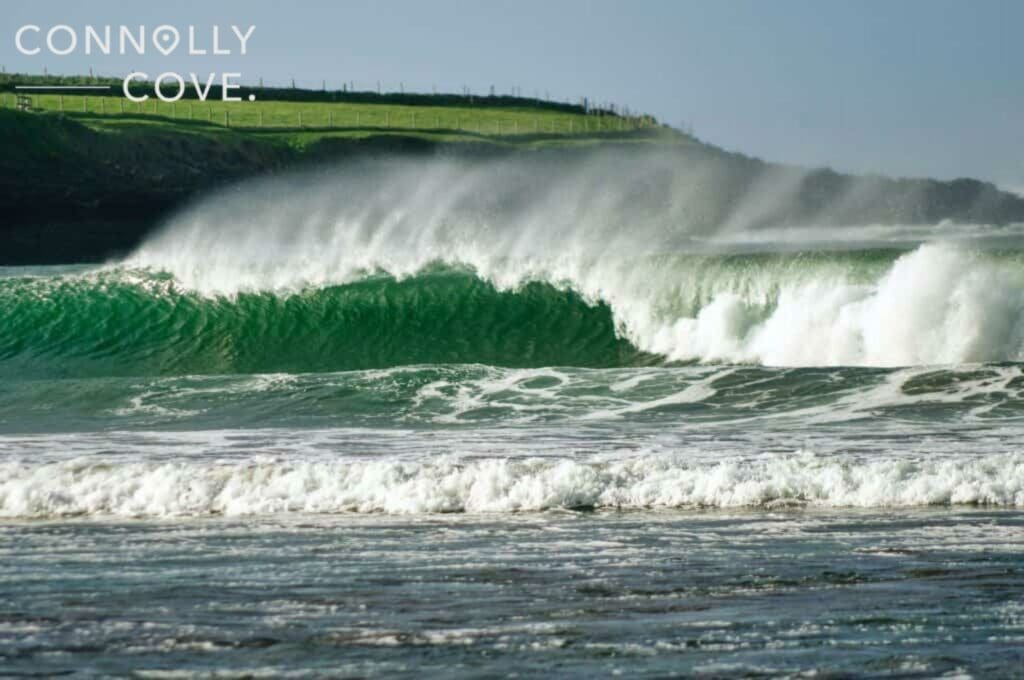
Surprisingly, Manannan’s magical items extended to more fantasies. They included a flaming helmet, an invisibility cloak, and a sword, which he called Fragarach. The sword’s name means the Answerer of the Retaliator; it was so powerful that it could slick through steel armour. Its name indicates its ability to make the target truthfully answer any question once it’s pointed at him.
Manannan’s Mystical Creatures
Manannan, the Sea God, also owned animals. These animals were mystical creatures, including a horse and a swine. The horse’s name was Enbarr the Flowing Mane. Its mane allowed it to walk over water for great distances, and it could walk as easily on water as it could on land.
The swine had a flesh that offered food for feasting and celebrations. It never ran out of food, for its skins regenerated daily.
Some myths suggest that Manann is the father of Nimah Cinn Or, who arrived in Ireland and brought Oisín to Tír na nOg (the Otherworld) on a white horse that could travel over water. Oisín to Tír na nOg is one of the most famous legends in Irish mythology alongside the Children of Lir.
Bodhbh Dearg
Bodhbh Dearg was an ingenious king whom the Irish people looked up to as someone who had a solution for every problem. He was also a caring and considerate person. After receiving the kingship after the battle, he realised how offended Lir was. He arranged for Lir to marry one of his daughters to end their feud.
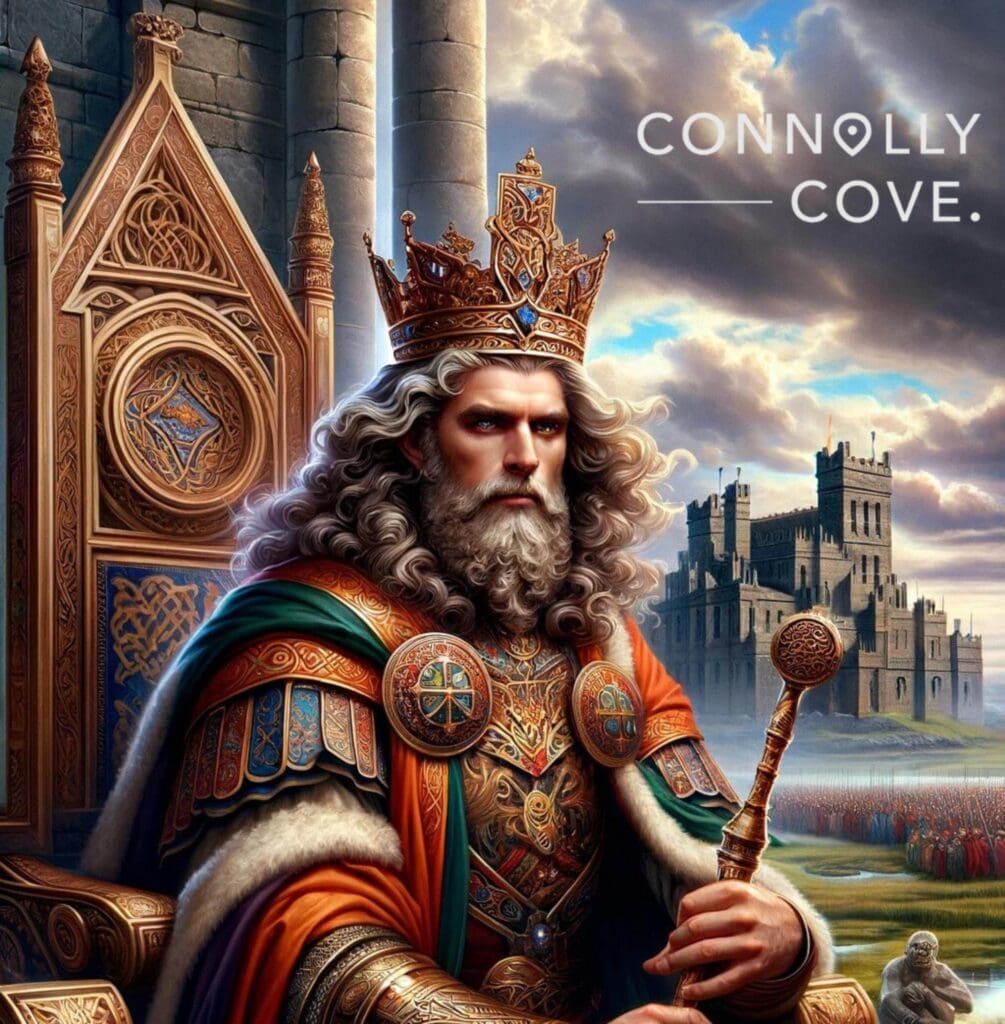
Bodhbh played a significant role in the story of the Children of Lir. He not only gifted Lir with both of his daughters, but he also punished Aoife for what she had done to the children, transforming her into a demon for eternity.
During the children’s first stage of the spell, Lir stayed by the lake to be always near them. Some stories say that Bodhbh joined Lir at the lake to raise his spirits during that tough time. He found pleasure in the beautiful voices of the children’s swans.
Bodhbh makes appearances in other tales of ancient Ireland. He had a connection to Aongus Og, son of the Daghda, the Huge Father God Figure, and Bionn, the Goddess of the River Boyne. Aongus, too, was a god; he was the god of love.
Bodhbh Dearg’s Relation to the God of Love
When Aongus fell in love with a woman he saw in his dreams, his father, the Daghda, sought help from Bodhbh. Bodhbh started investigating and searching for a whole year. Then, he announced that he found the woman of Aongus’ dreams.
Her name was Caer, and she was Ethel’s daughter. Like the symbol in the Children of Lir, Caer lived as a swan. She was a beautiful maiden. However, her father refused to let her go and imprisoned her in swan form.
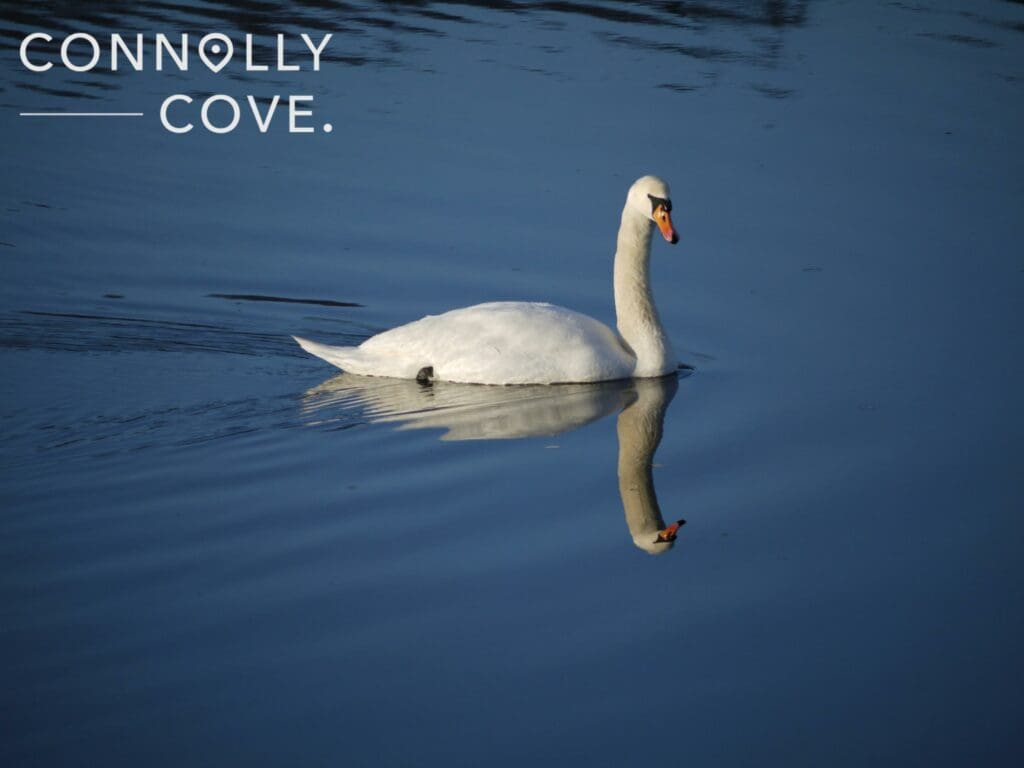
Bodhbh sought help from Ailili and Meadhbh. They discovered that Caer was a maiden transformed into a swan. Aongus declared his love for her, and he transformed himself into a swan. They flew away together and lived happy lives.
This story turned swans into a symbol of love and fidelity in Ireland.
Aoife
Aoife, pronounced as Eve, was the youngest daughter of King Bodhbh Dearg. She was the second daughter of his to marry Lir after her sister, his first wife, died and left their children without a mother’s love. Aoife is an essential character in the legend of the Children of Lir, as she is the main antagonist.
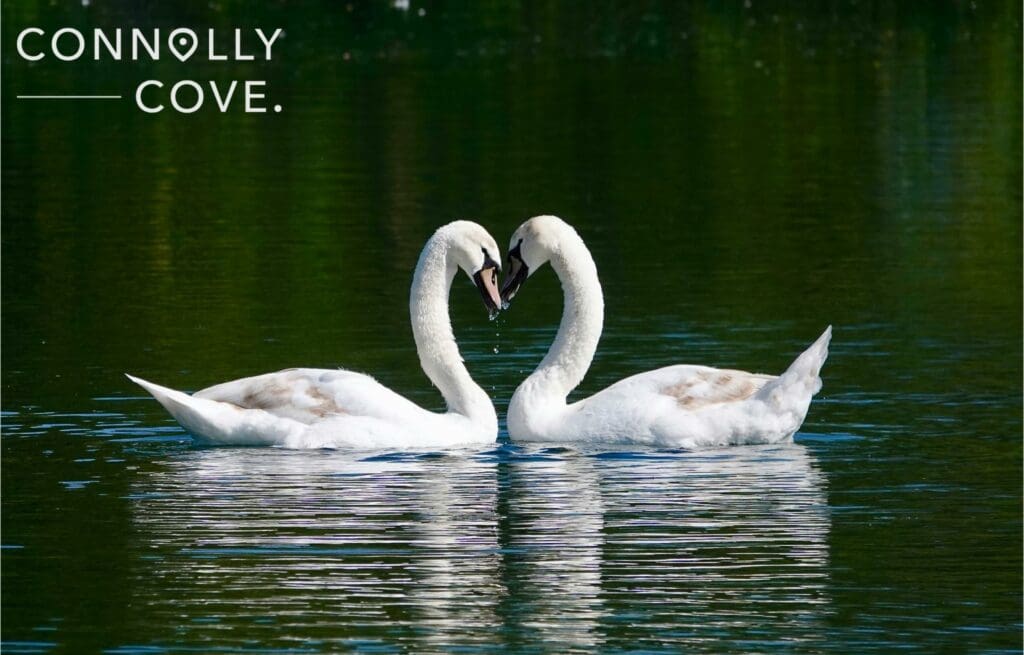
In some tales, Aoife was Bodhbh’s foster daughter. He raised her like his own, but she was the daughter of Ailill of Aran. Aoife was known for being a jealous woman. However, before projecting her jealousy toward the children of Lir, she originally showered them with her love and affection.
Her jealousy ultimately overcame her and robbed everyone of happiness, including Aoife herself. Lir’s devotion to his children was unwavering, even after they were turned into swans, but things were never the same.
Legends stated that Aoife initially felt terrible when she transformed the four children. In some versions, she even went to Bodhbh Dearg before Lir found out what she had done. She allowed the children to keep their voices and consciousnesses, and they begged her to reverse her spell.
Although Aoife regretted her actions, it was already too late. She could not undo the curse she had imposed on the children. The children of Lir had to suffer for 900 years before the spell was supposed to break.
Aoife’s Enigmatic Fate
Aoife suffered severe punishment for her foul deeds and what she had done to the children of Lir. How Bodhbh punished her is up to interpretation and varies based on the iteration of the legend you hear.
Some stories claim that Bodhbh transformed her into an air demon for eternity. People said that her voice was evident in the wind; they could hear her as she sobbed and cried.
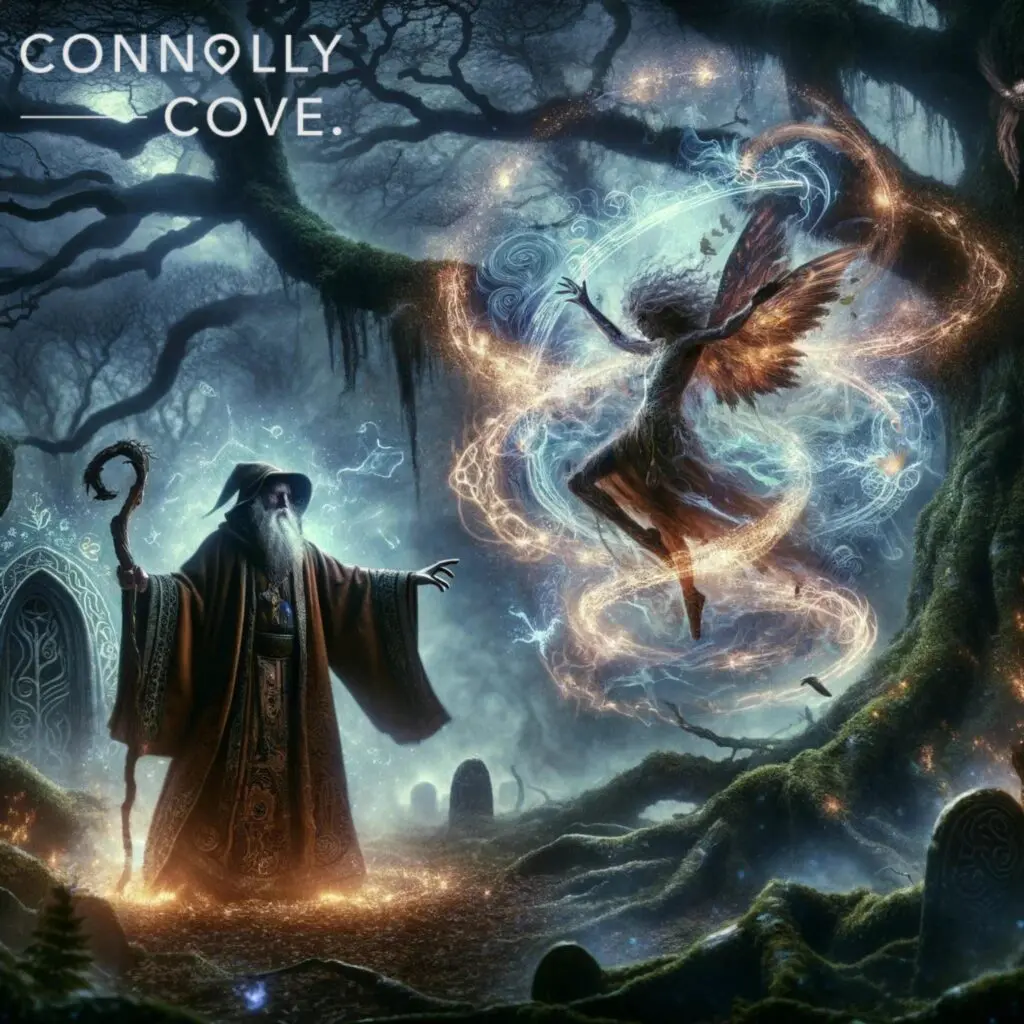
Others claim that she was turned into a bird that had to roam the skies forever and a day. Legends and myths have always had an unexplained relationship between women and birds. These themes did not only exist in Irish culture, but other mythologies have also adopted the same themes and symbols.
Ailill
Although he was not one of the characters in The Children of Lir, Ailill has strong connections with some of the main characters. Ailill appeared in other tales with Bodhbh Dearg. He helped him during the case of Aongus Og.
Most importantly, in the legend of the Children of Lir, Ailill is said to be the real father of the two daughters who married Lir, Aobh and Aoife. Bodhbh Dearg raised the two daughters as if they were his own but was not their biological father. The reason behind Bodhbh adopting the girls is unknown but potentially has roots in other tales from Irish mythology.
Most of the stories about Ailill are somehow connected to Queen Meadhbh. Ailill was a fighter and champion whom Meadhbh ditched her third husband to be with. Their most famous legend is Táin Bó Cúailnge (The Cattle Raid of Cooley).
At first, Ailill seemed to be the best candidate for her. He even accepted her affair with Fearghus MacRioch, the King of Ulster, after her other partners fell jealous upon finding out about her infidelity. A twisted turn came to being when Ailill eventually let his jealousy take over and was responsible for Fearghus’ death.
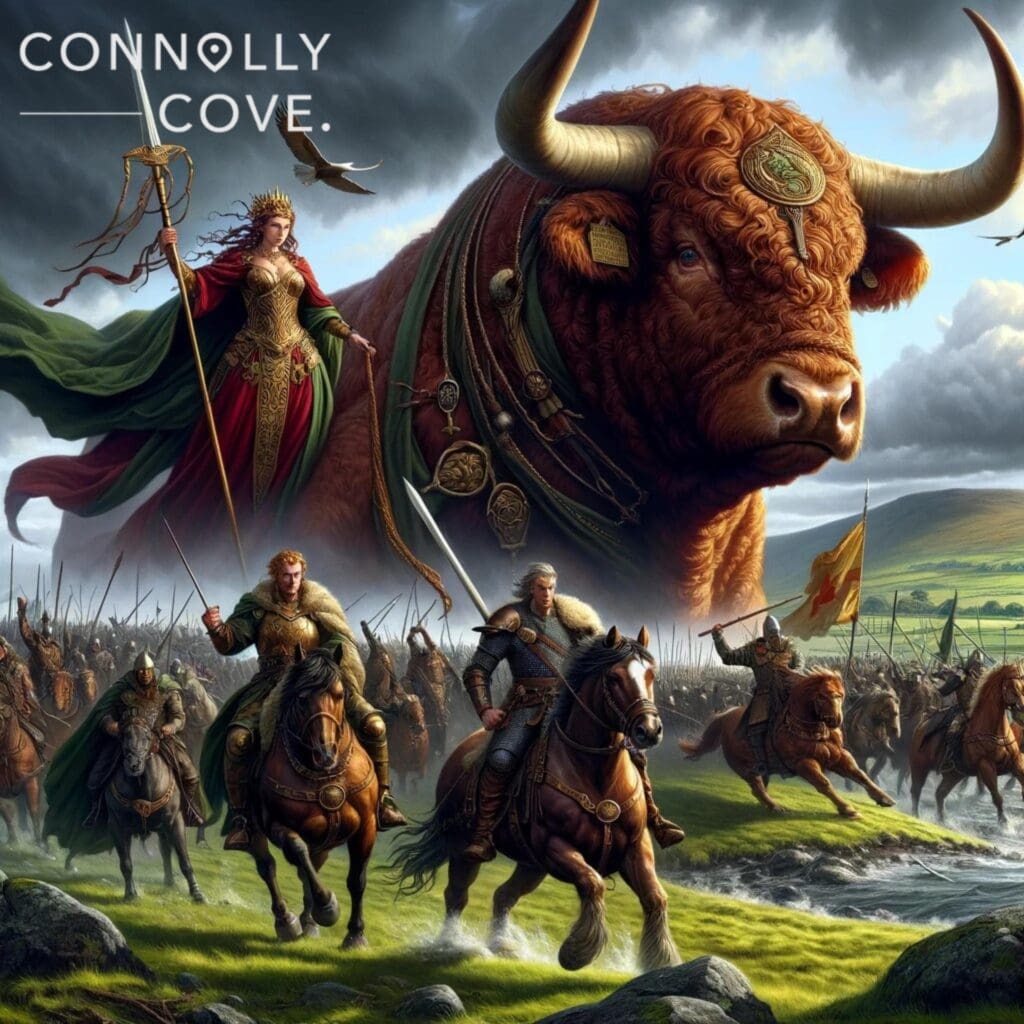
The Relation between the Irish Mythology Cycles and the Characters of the Children of Lir
Since we have introduced each cycle of Irish mythology and the essential characters in the Children of Lir, we can now explore which cycle each character belongs to. The legend of the Children of Lir falls into one cycle, but that does not mean that all of the story’s characters belong to just that cycle.
Some of the characters may belong to other cycles. Characters in Irish mythology are not bound to only one cycle; they can appear in stories across multiple cycles. For example, Aoife has her legends covering her background and other adventures.
Irish mythology has four primary cycles, but the Children of Lir tale involves only two: the Mythological Cycle and the Ulster Cycle. The characters featured in the legend belong to these two cycles only. Their being from these cycles does not reveal their roles in the story, but it can provide more insight into their backgrounds in Irish mythology.
It may help you think of Irish mythology’s cycles as eras or time periods. A person can live through many eras, even more true for supernatural deities who can live for centuries. This is why some characters appear across multiple cycles.
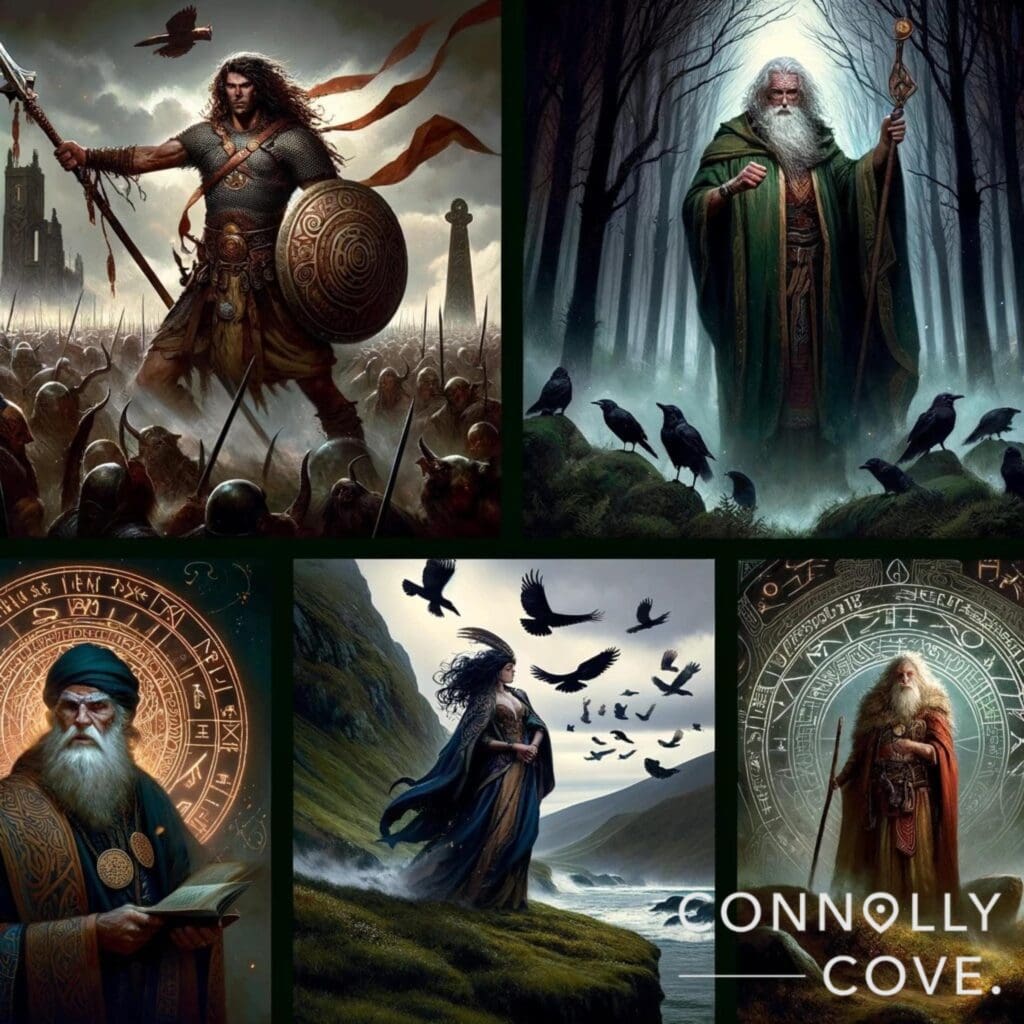
The Mythological Cycle and the Children of Lir
The Mythological Cycle plays the most significant role in the legend of the Children of Lir because it is where most characters are from. Additionally, it is the cycle that the story itself falls under. It is the oldest cycle in Irish mythology, featuring legends about people considered divine figures. Knowing this, it is easy to see why The Children of Lir is one of the most popular stories of this cycle.
The tales in this cycle did not have the opportunity to be converted to Christianity because they revolved around the Tuatha De Dannan, who went underground for good after the Milesians defeated them. The Tuatha de Danann can pop up in any cycle, but they first arrived in Ireland and inhabited it during the Mythological Cycle.
The Ulster Cycle and the Children of Lir
The second cycle, the Ulster Cycle, is all about warriors and fearless fighters. Surprisingly, Aoife happens to belong to this cycle. This may not have been obvious based on her role in the plot of The Children of Lir.
However, like her real father, Ailill, she was a warrior. Her strength is more noticeable in other tales of ancient Ireland but not in The Children of Lir. Instead, Aoife is portrayed as jealous and must use magic to get what she wants, contrasting with Ailill’s grounded nature and strength. This is likely because she was raised by a member of the Tuatha de Danann in this legend and learned magic from Bodhbh.
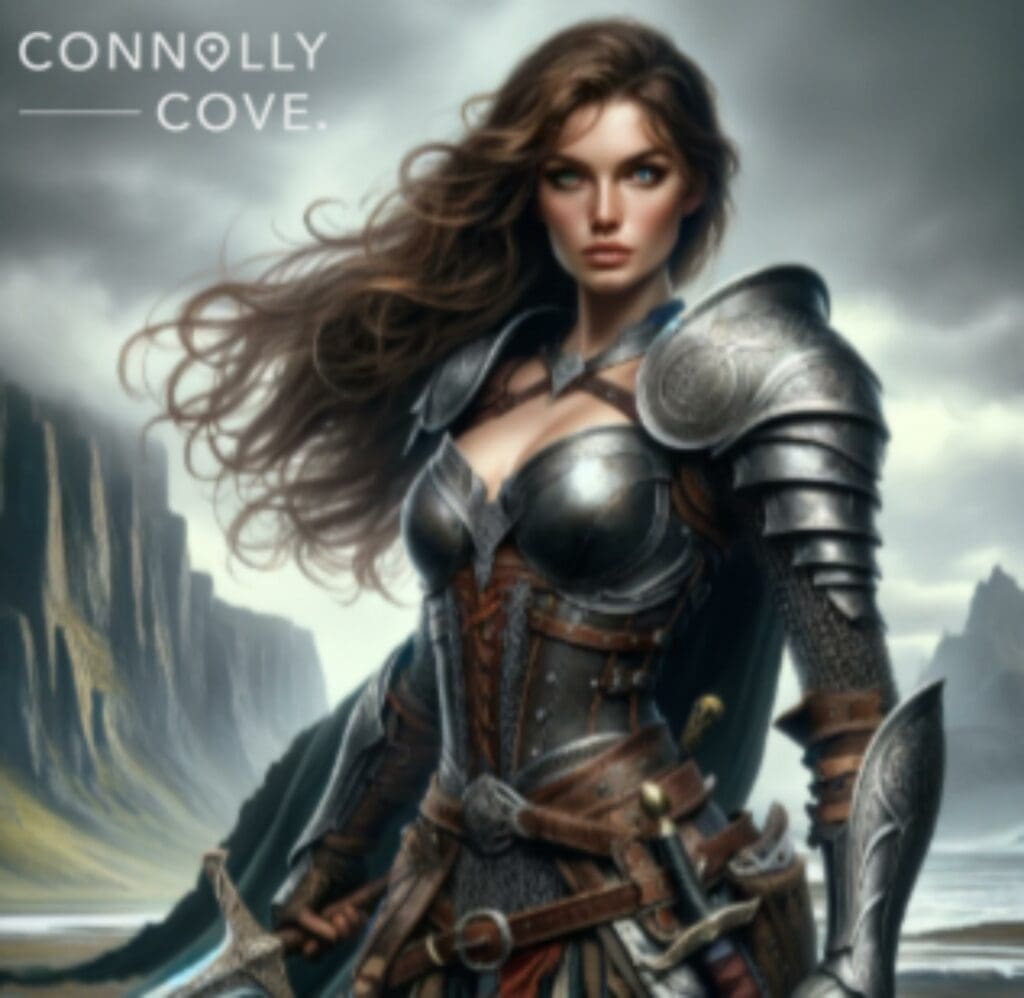
The Ancient Irish Races Related to the Children of Lir
In the tales of ancient Ireland, more than a few races appear. These races are responsible for shaping the history of the legends and myths. There are usually historical battles involving two or more of those races.
The mystical races in Irish mythology include the Tuatha De Danann, the Fomorians, and the Gaels. Each of them was a powerful, supernatural, magical race. According to myth, the residents of Ireland today descend from the Gaels. The Tuatha de Danann were Gods, and the Fomorians represented the destructive power of nature.
Of all of the tribes in Irish myth, the Fomorians are pretty interesting. Some were monsters, others were giants, and a few were beautiful humans. This variety made for many fascinating tales and characters, such as Balor of the Evil Eye, who caused the tragic story of the Wooing of Etain.
To add to the complex relationships we’ve already discussed, some Tuatha de Danann and Fomrians fell in love and had children. These children often played a crucial role in fostering peace or rallying wars between the tribes.
Tuatha De Danann
The name Tuatha De Danann translates to Tribes of the God. More precisely, Danann refers to the goddess Dana or Danu. There were not a lot of tales about her in ancient legends and myths. However, she had been looked up to as an admired divine figure.
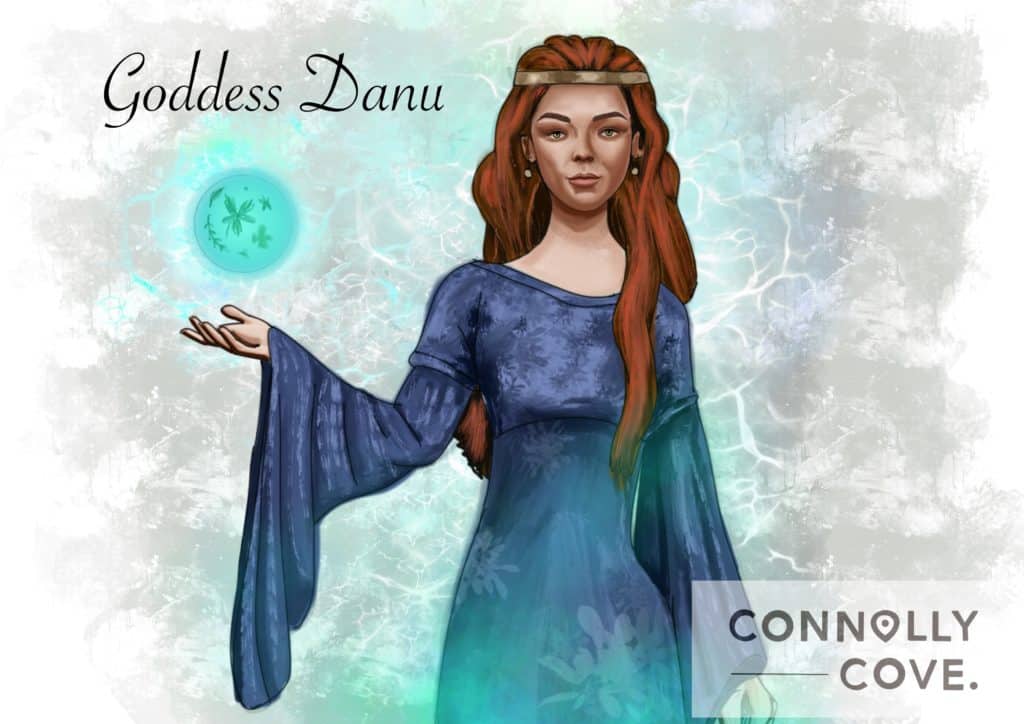
Throughout Irish mythology, some tales mentioned more information about her, but unfortunately, they were lost over time. We know that she was the mother Goddess that the Tuatha de Danann tribe looked up to. She was seen as a creator of sorts.
The Tuatha De Danann was a supernatural race that existed during ancient Ireland. They represented the folks that lived in Ireland before the emergence of Christianity. Before the Tuatha De Danann existed, there were the Nemeds. The Nemeds were the ancestors of the Tuatha De Danann. Both races seem to come from the same cities.
These cities existed in the northern part of the world, outside of Ireland, and were called Falias, Gorias, Murias, and Finias. Each city brought one of the four treasures of the Tuatha de Danann: Lia Fáil (The Stone of Destiny), Lugh’s Spear, Dagda’s Cauldron, and Nuada’s Sword of Light. Nuada was the king of the Tuatha De Danann when they first came to Ireland.
Nuada died during their battle against the Fomorians. The King of the Fomorians, Balor, killed Nuada through his poisonous eyes. In revenge, Lugh, a champion of the Tuatha De Danann, killed Balor himself. In doing so, Lugh unknowingly fulfilled the prophecy that Balor would be killed by his grandchild. Right after the battle, Lugh took over the kingship of the Tuatha De Danann.
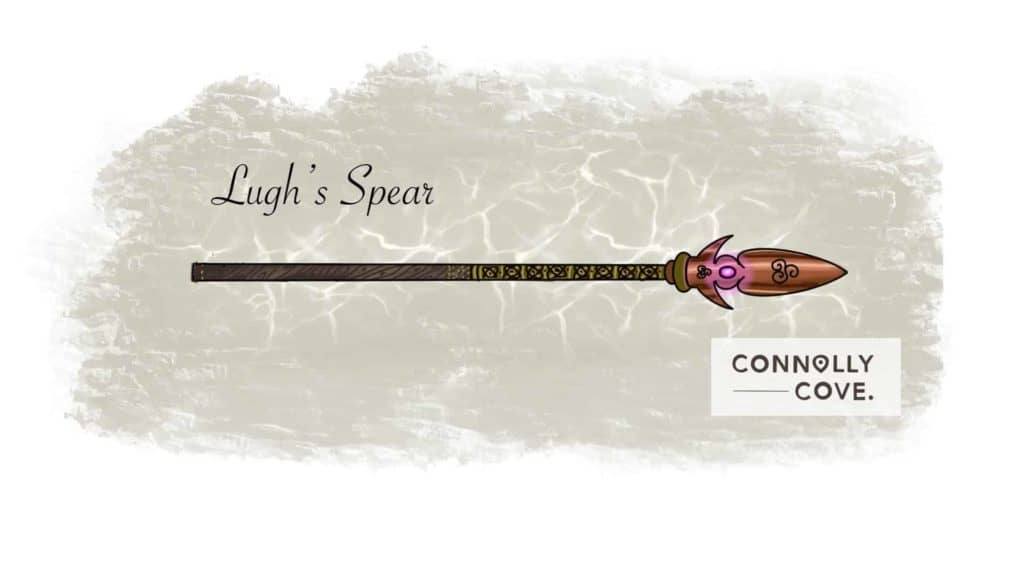
The Fomorians
The Fomorian race, commonly known as Fomoire in Old Irish, is another supernatural race found within Irish mythology. Their portrayals are often hostile and monstrous; they belong to the deep or underground parts of the sea. Since they are usually linked to the destructive powers of nature, Fomoire started to seem like titans, enormous beings, or raiders of the sea.
Their relationship with the other races of Ireland was never pleasant. All other races were their enemies; however, their relationship with the Tuatha De Danann was a bit more complicated. Although they were enemies, people from both parties married and had children.
The Fomorians seemed to be the complete opposite of the Tuatha De Danann. The Tuatha De Danann believed in gods representing the symbols of peace, tranquillity, and civilisation. On the other hand, the Fomorians’ gods were ones of darkness, chaos, death, and all power that seemed destructive to nature.
The Fomorians had nothing to do with the legendary tale of The Children of Lir, but their story in myth is intertwined with the tribe of Danu.
Swans in the Irish Culture
Swans are amazing creatures and have always been part of Irish mythology. The story of The Children of Lir is not the only tale in which swans play a significant role; many other tales also showcase their importance.
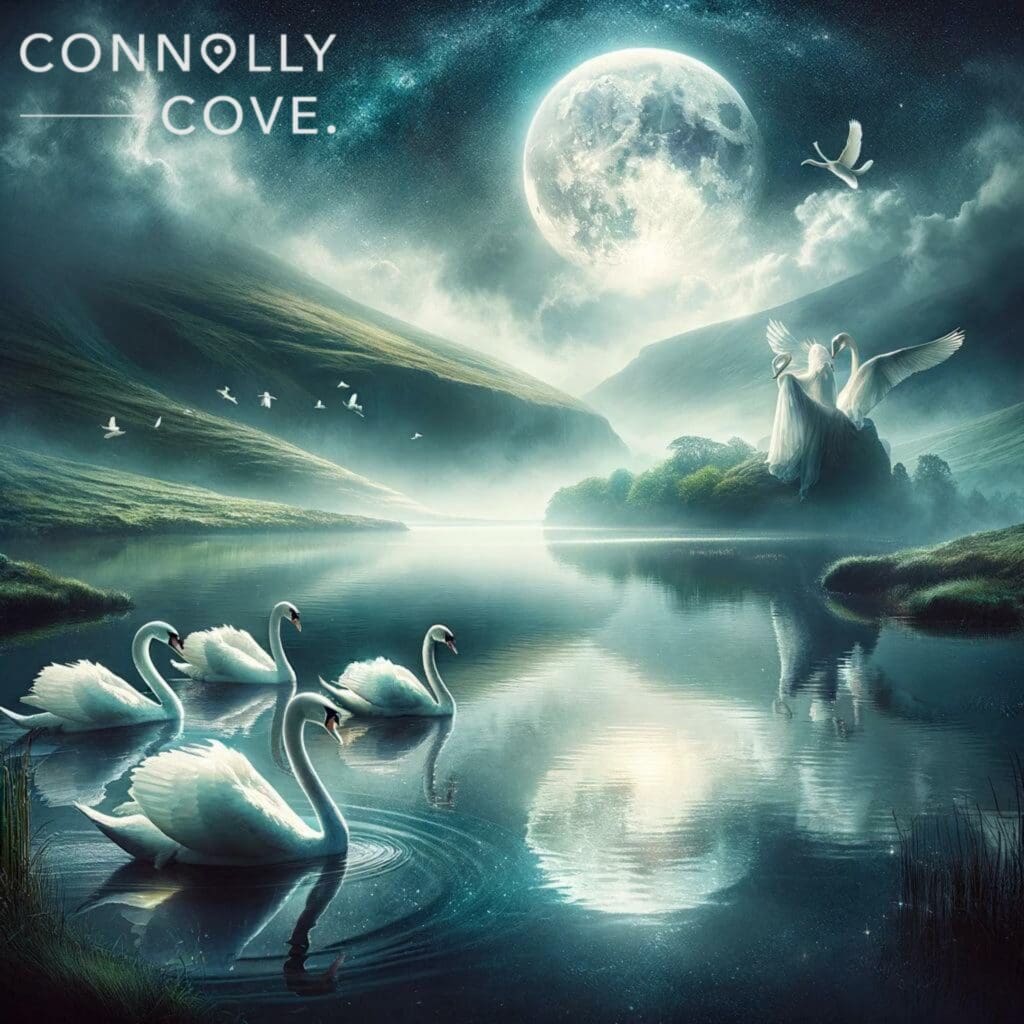
Swans have always been symbols of love and purity. The reason behind this symbolisation is that swans mate for life. It is no wonder why Irish mythology used them to describe those who possess clarity and fidelity within their heart.
Many mythologies have depicted swans as shape-shifters. They drove people to believe that swans can shift into the form of human beings and back by their will. Such misconception has driven people worldwide, particularly in Ireland, to treat swans like they treat humans. In Ireland, Swans are protected by the Wildlife Act 1976.
The Swan maiden is a familiar archetype in mythology worldwide. Like the Celtic Selkie, who wears seal skin to transform into a seal, swan maidens use swan skin to transform into a bird. These creatures can be found in multiple legends from many different civilisations.
Irish people call the swans Eala, pronounced as Ellah. In the wild, swans can live up to twenty years, so imagine how long they can live in captivity. This rare lifespan adds to the idea that swans are part human. According to Irish mythology, swans could also travel between the real world and other worlds that existed in different realms.
The Symbolism of Swans in the Children of Lir
Having known how the world, and Ireland specifically, regards swans, it is easy to guess why the children of Lir were changed into them instead of any other creature. Swans represent transparency, innocence, and purity.
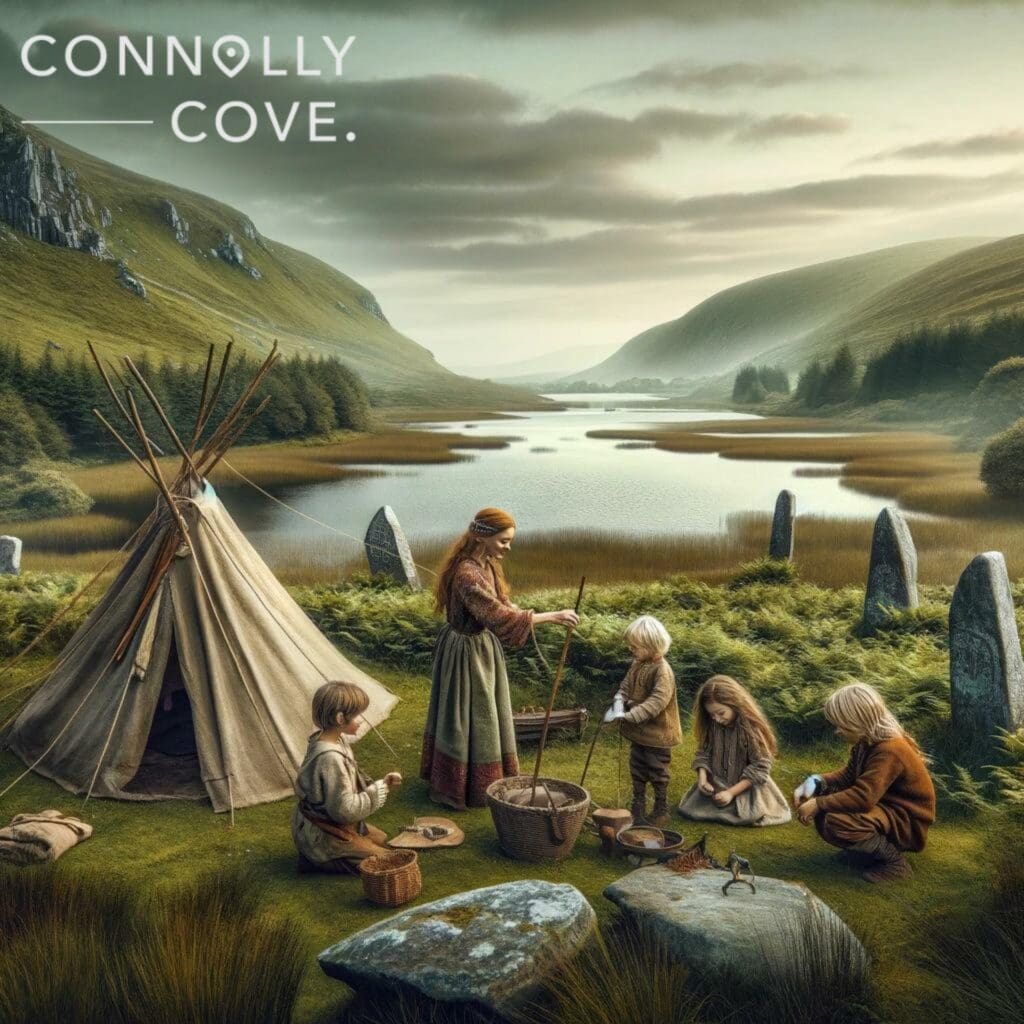
These same characteristics apply to the four poor children. They were only kids trying to move past the loss of their mother when their lives turned upside down. Naively, they went with their stepmother to spend a fun day by the lake, unaware of what she was planning for them.
Swans in Other Irish Legends
Apart from the Children of Lir, many tales in Irish mythology depict swans and include them in the plot. The swans in those tales were usually people who fell victim to some sort of spell. However, other tales portray the swan as the symbol of eternal love.
Tochmarc Etaine
One of these legends was Tochmarc Étaíne or the Wooing of Etain. In this legend, Etain was the beautiful daughter of Ailill, the father of Aoife and Aoibh, and Midir of the Tuatha De Danann fell in love with her. They married, and their life was great until a woman’s jealousy took over.
That woman was Fúamnach; she turned Etain into a butterfly, leading people to believe she ran away or just disappeared. Etaine wandered aimlessly in the vast world for many years as a butterfly. One day, she fell into a glass of wine, and Etar’s wife swallowed her. It sounds tragic initially, but that incident ensured that Etain was reborn into a human being once again.
Once she was a human again, she married another king. However, her previous husband, Midir, knew the truth, and he wanted her back. He had to go through a game, a challenge against the High King, and whoever won got to be with Etain.
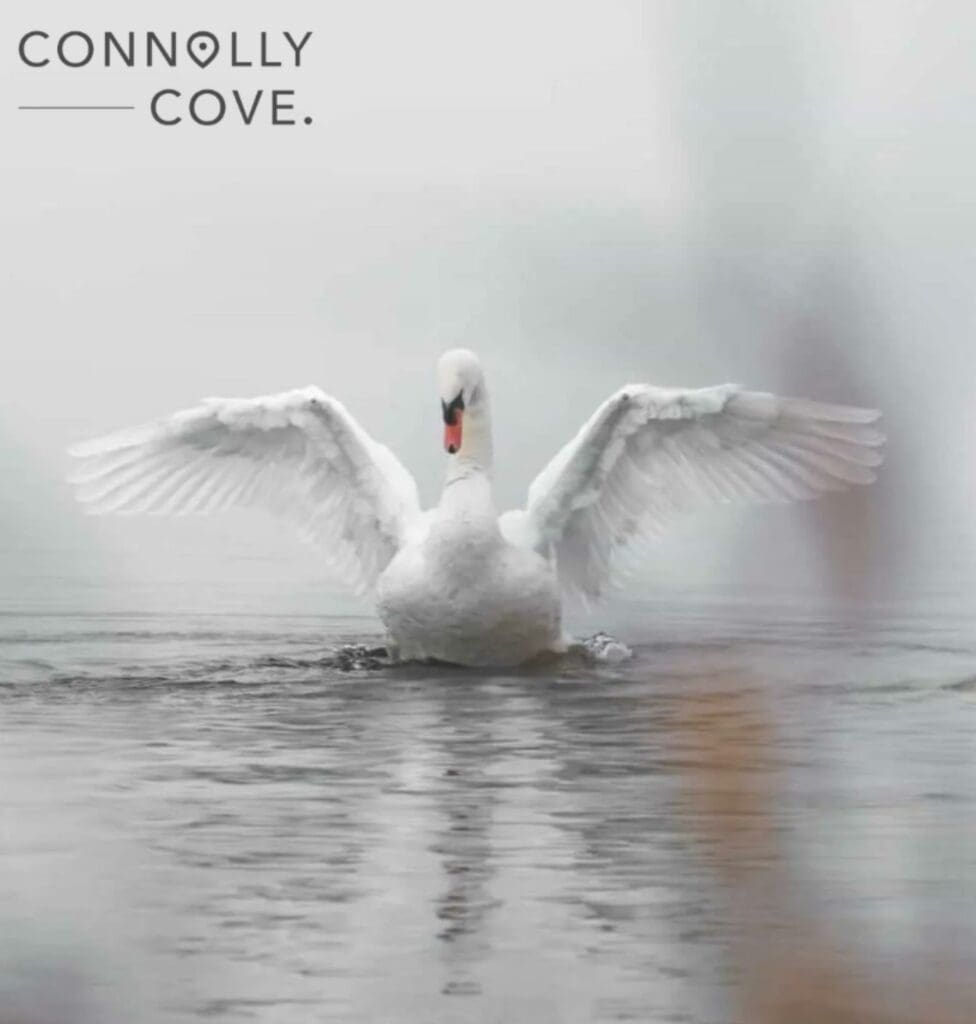
Midir won, and they changed into swans when they hugged one another. Unlike the Children of Lir, the swans in this story symbolise the meaning of true love. It also assures that loving couples live committed to one another for life.
The Wonders of Ireland
The Wonders of Ireland is an ancient tale that P.W. Joyce wrote back in 1911. The story is about a man who threw a stone at a swan. The swan fell to the ground, instantly turning into a beautiful woman. The woman told the man, poet Erard Mac Cossi, her story of changing into a swan.
She claimed that some demons stole her while she was on her deathbed. The word demon in that story does not refer to real evil spirits. Instead, it relates to magical folks who travelled together in the form of swans.
Aengus, the God of Love, and Caer Ibormeith
Swans are a symbol of tragedy in The Children of Lir, but they are also a symbol of love in this legend. This tale is about Aengus, the God of love, who fell in love with a woman called Caer, whom he constantly saw in his dreams.
After searching for her for a long time, he realised she was a swan. She was among 149 girls who had also changed into swans. Chains paired each of them with one another. Aengus turned himself into a swan, recognised Caer, and they married.
They flew away together, singing love songs in their beautiful voices. Again, the swans in this story symbolise freedom and eternal love. The god of love turning into a swan helped add to the bird’s symbolism.
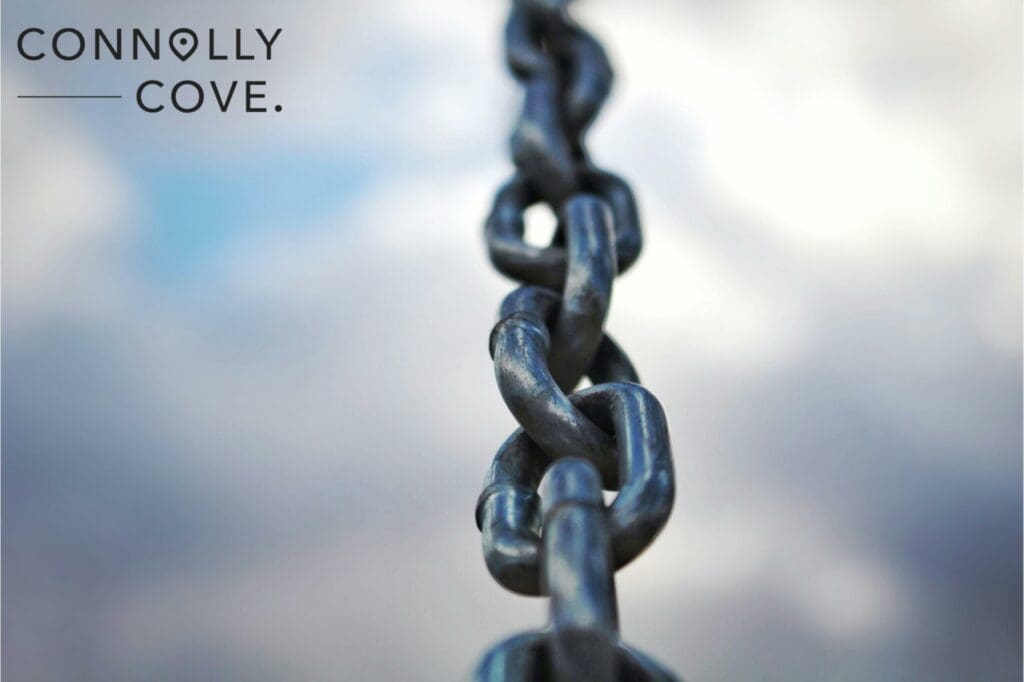
The Three Shallows on Which the Children of Lir Lived as Swans
Beyond doubt, the story of the children of Lir took place in the Irish lands. Within the story, the names of several places passed by the readers. These places include the Lake Derravarragh, the Sea of Moyle, and the Isle of Inish Glora.
Above and beyond, Lir, the God of the sea, lived in a beautiful castle. It was the castle where he had the best time of his life in the presence of his wife and four beautiful children.
Before the tragic incidents happened, the castle was a fantastic place. The featured locations all exist in Ireland, but we’ll introduce the waters on which the children’s swans lived.
Lake Derravarragh
Most stories mention this location as Lake Derravarragh, but you may have heard it is called Lough or Loch Derravarragh. Both words, Lough and Loch, mean Lake in Irish and are more commonly used.
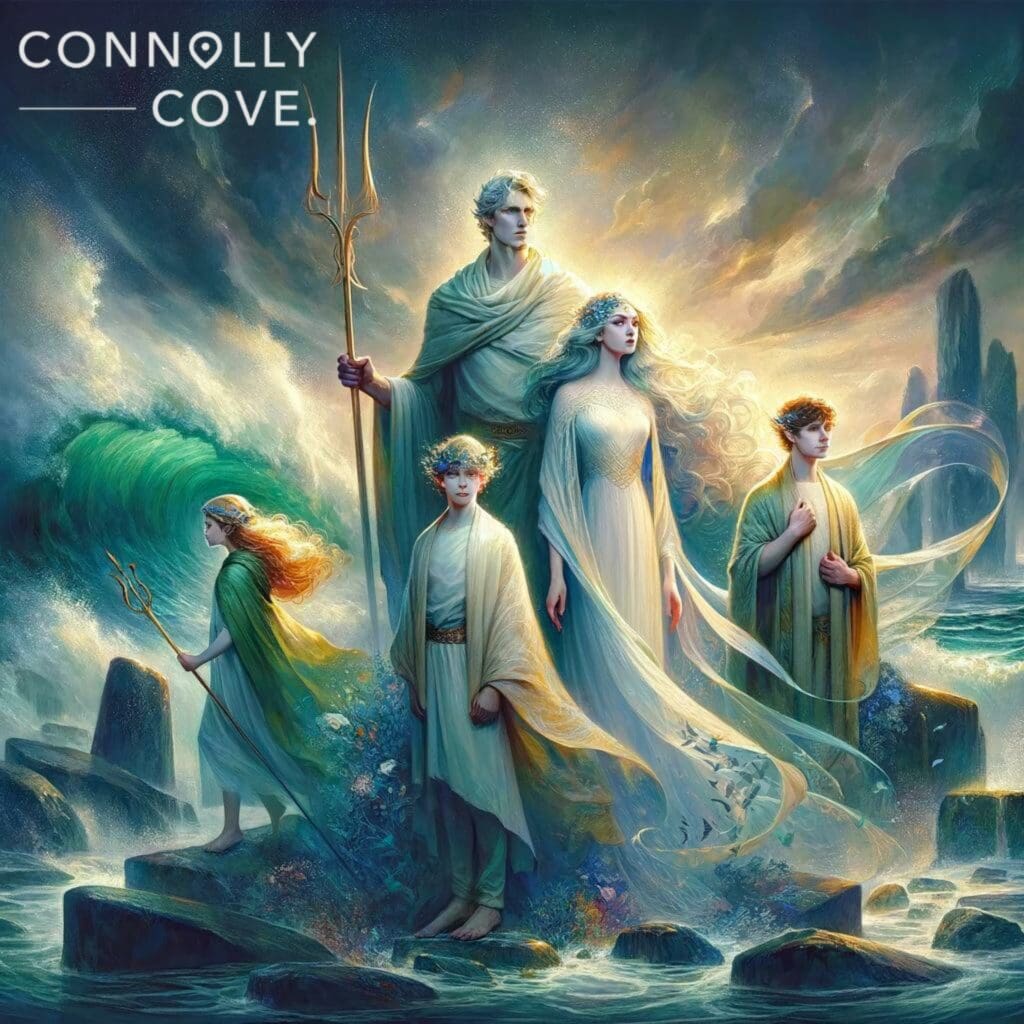
This lake is located in Ireland’s hidden heartlands or midlands. Lough Derravaragh is on the River Inny, which flows from Lough Sheelin to the River Shannon.
The Lake or Lough Derravarragh became the central spot for performing water sports and activities. By that lake, there is a public area where people gather. It contains a café, a shop store, and a caravan park. The area usually opens during the summer, so people can enjoy soaking in the sun and swimming in the water.
At the end of the lake, there are several Ringforts. Ringforts are rounded settlements in Ireland, and many are spread throughout the country. They have existed for years and have numerous functions, including agriculture and economic significance. They also acted as a defensive feature.
Returning to the lake’s significance, it has been mentioned in more than a few famous legends and Irish myths. Most importantly, the Children of Lir, but Saint Cauragh is another legend that connects with Lough Derravarragh.
The Children of Lir and Lough Derravarragh
The famous Irish legend, the Children of Lir, takes place in this significant location in Ireland for a large part of its plot. It was mentioned when the four children went on a picnic with their stepmother, and she turned them into swans.
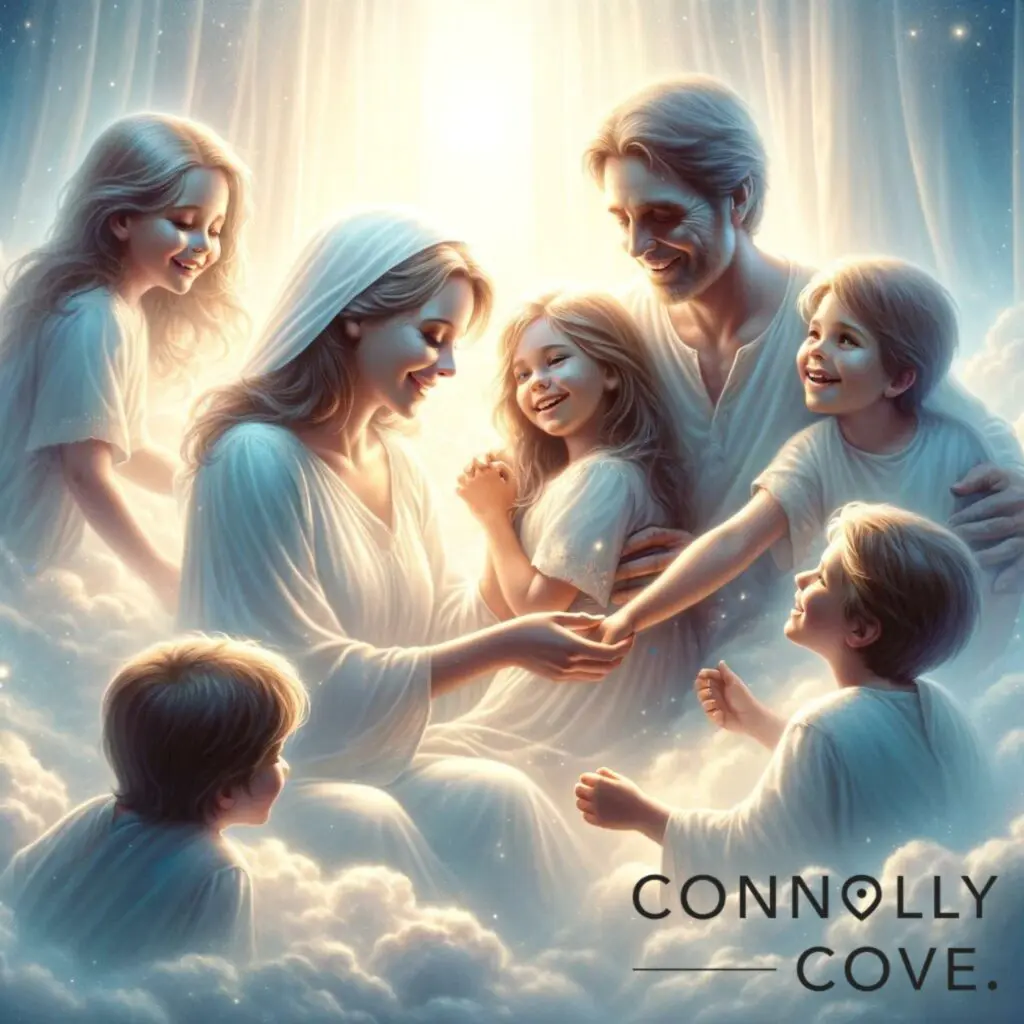
Her spell stated that the children are to live their first 300 years on the shallows of Lough Derravarragh. Since the spell would last 900 years, the remaining 600 years were equally divided to be spent on the Sea of Moyle and the Isle of Inish Glora by the Atlantic Ocean.
Saint Cauragh and Lough Derravarragh
Saint Columcille ejected Saint Cauragh out of the Kells Monastery in this legend. Saint Cauragh had nowhere to go, so he randomly wandered around the city until he came across Knockeyon.
Once he arrived there, he started his spiritual journey by praying to God and fasting. Nobody was around, and he was so far away from the eyes of the world. Saint Cauragh’s fasting reached an extreme level, and he started to feel like his death was somewhere near. He kept praying to God to appease his thirst.
After a short while, Saint Cauragh started paying attention to the sound of water. It was dripping out of a rock that was right above his head. The sudden appearance of water strengthened Saint Cauragh’s belief in God.
He drank with satisfaction until he tamed the thirst that was slowly killing him. The source of this water was Lough Derravarragh. By then, he decided to build a chapel.
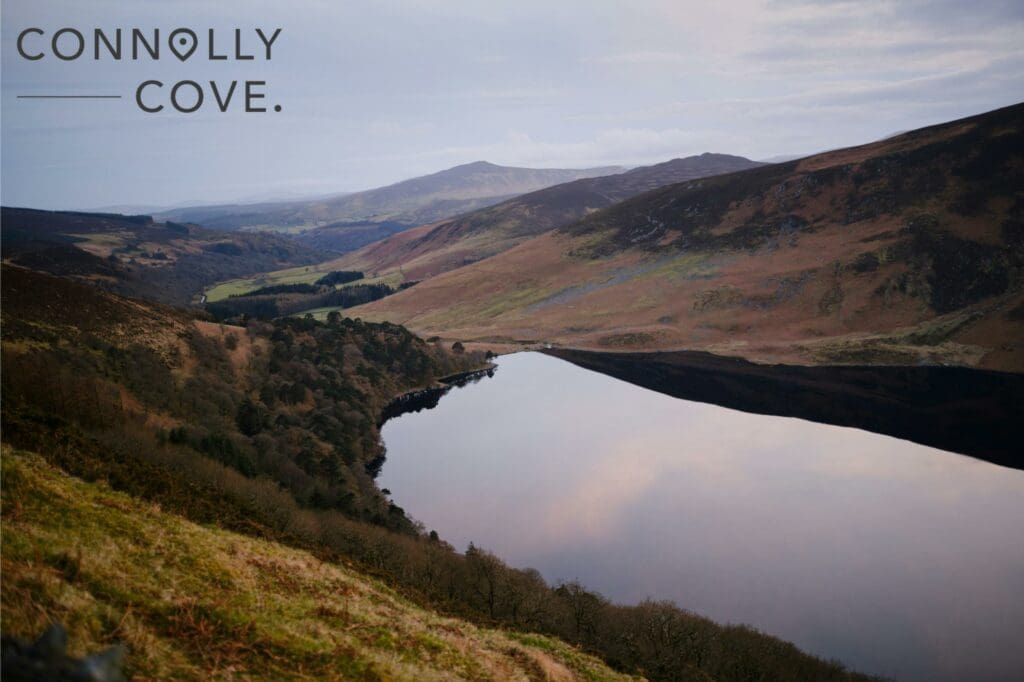
The well that receives the water from the lake was an attraction during the Middle Ages. People used to undertake a pilgrimage uphill with their feet quite bare. The first pilgrimage usually took place on the first Sunday of harvest. Successively, this was how Cauragh Sunday emerged.
The Swans of Lough Derravarragh
This title does not refer to the Children of Lir. It refers to the existence of swans in Lough Derravarragh. People are used to seeing swans live there and aimlessly roam around.
They might be why the legend of the Children of Lir still lives to this day. Many Irish legends survived through the years and became popular among different generations, but very few are as well known and preserved as the Children of Lir.
This could be thanks to the constant presence of swans in Ireland, which reminds us of the tragic tale.
The Sea of Moyle
According to the Irish and Scottish people, that sea is called the Straits of Moyle. It is the narrowest extended area of the North Channel. The Sea of Moyle actually extends between the northeastern and southeastern highlands of Scotland.
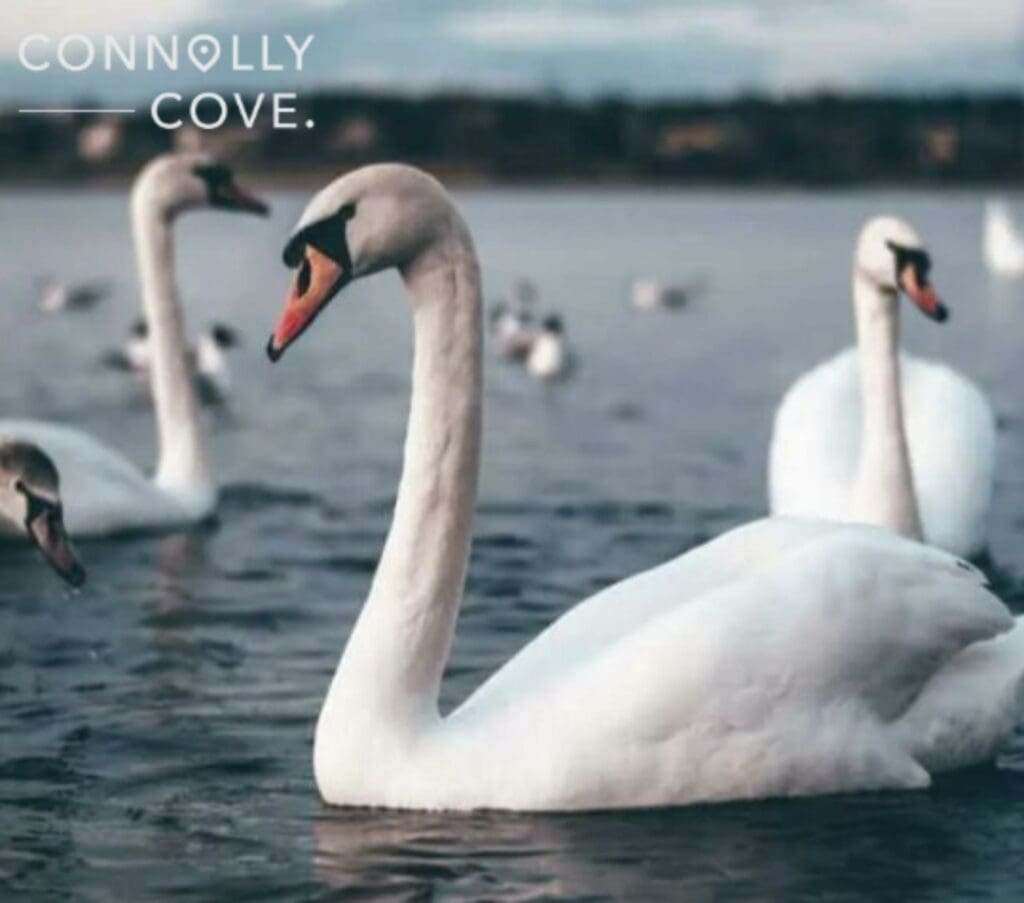
The northeastern part is County Antrim, one of the six main counties that form Northern Ireland. On the other hand, the southeastern part is the Mull of Kintyre, which lies in the southwest of Scotland.
Interestingly, the two opposite shores of the sea can be clearly seen during clear weather. Although both shores are in two different countries, the shortest distance between them is only 20 kilometres.
They suffered significant obstacles during their period on that sea. They lost one another during the heavy storms and were wounded by the cold. Gladly, for one happy moment, they reunited again and were ready to travel again to the last destination of fate bestowed upon them.
Inish Glora, the Isle of the Atlantic Ocean
Different sources disagreed on whether the name of this place was composed of two words, Inish Glora, or only one word written like Inishglora. Either way, at least, they all state the same needed destination, the one that the Children of Lir story included in its plot.
In Irish, this island is known as Inis Gluaire. It lies by the coast of Mullet Peninsula, which is located in Erris, a town in County Mayo in Ireland.
According to Irish history, Inishglora is the holiest island among the surrounding ones. It was the last destination the Children of Lir flew to during their previous 300 years of banishment.
It was also where they met the holy man who cared for them while they lived by his house. Legends say that when the Children of Lir returned to their human forms after the spell broke, they died immediately, considering their ancient age.
In sequence, people buried their bodies on that island. In some stories, they fly home before becoming human, only to find the ruins of their home.
The Tullynally Castle
The name Tullynally derives from the Irish expressions Tullaigh and Eallaigh. The literal translation of this word means the Hill of the Swan. The castle earned this name for the hill on which it overlooks the famous lake known as Lough Derravarragh.
It was the lake on which the children of Lir turned into swans and lived their first 300 years of the spell. Legends suggest that the castle in which the children of Lir lived was what is now the Tullynally Castle.
The story’s plot may not have been clarified, but since their father found them nearby, the speculation may be true. Besides, when Lir learnt about the tragedy of his children, he lived by the lake to be near them. In other words, finding them nearby and staying around the house for 300 years soothed his endless wounds.
Henry Pakenham built this castle, which is sometimes referred to as the Pakenham Hall Castle. It was home to the Pakenham family, a royal family. Henry Pakenham was a captain in the Parliamentary Dragoons. He received a large piece of land, which included this castle.
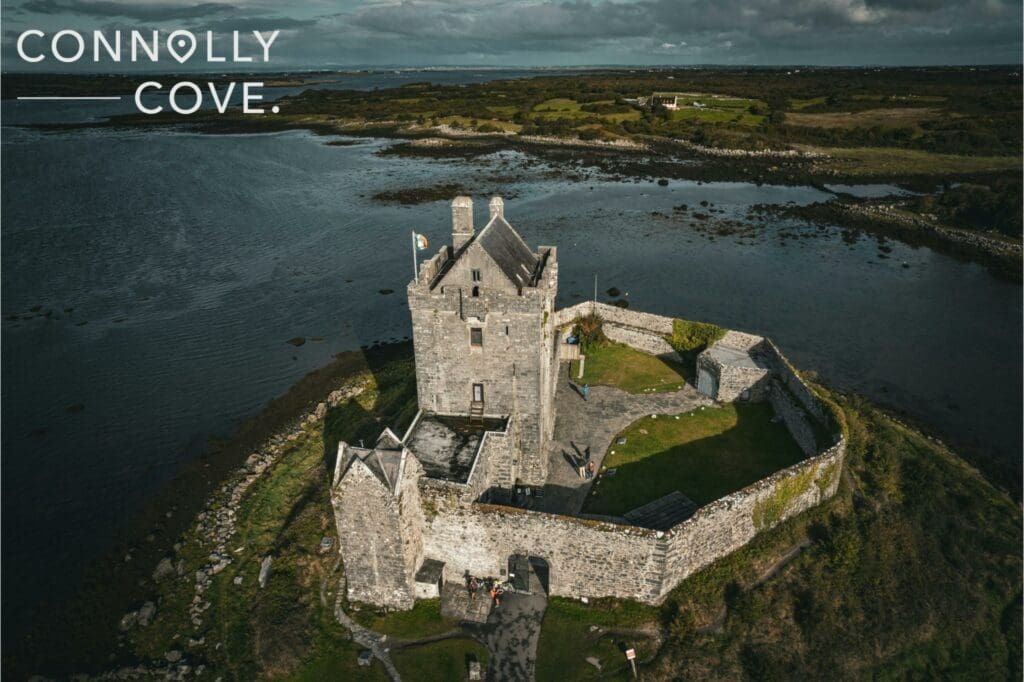
The Significance of the Children of Lir Story
Ireland may have grown from the era of developing mythology and legendary tales. However, some, or even most, of its legends and myths will always be prominent in classic literature.
Even though the tale is quite old and ancient, people still tell the story of the Children of Lir. Since the story takes place in many historical places, it is easy to always remember it while witnessing the beauty of Ireland.
The Children of Lir has become a significant part of Ireland’s history. People will always remember the story while watching the swans aimlessly swimming in Lough Derravaragh, passing by the Tullynally castle, or even the Sea of Moyle.
It’s no wonder all of those mentioned places are popular tourist attractions in Ireland. Not only are they beautiful, but they also remind us of the immortal legends and myths of the Emerald Isle.
It is the kind of legend that will always live on, no matter how much time passes. The story’s moral is ambiguous – is it about the evils of jealousy? Or the importance of love and loyalty? Or even the fact that you must try to make the best of situations you can’t change?
In truth, it doesn’t matter how you interpret it. With each version of the Children of Lir, you can witness someone’s interpretation of the tragic yet beautiful tale, sombre yet magical. Irish storytelling is all about bringing people together to share a few moments of wonder, which is essential.
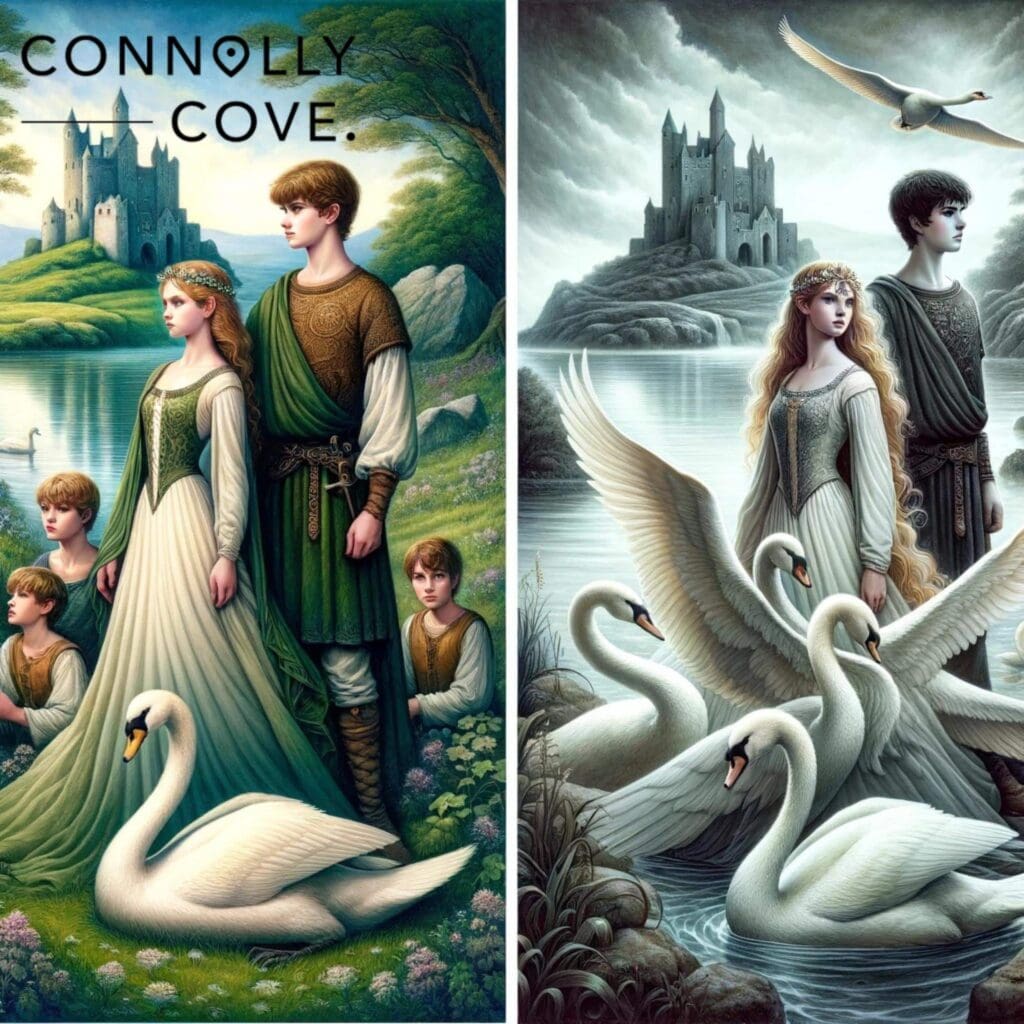
The Children of Lir is One of the Most Famous Celtic Legends
The tale of The Children of Lir is a timeless testament to the enduring power of love, resilience, and the human spirit in adversity. The legend reminds us of the essential bonds of family and the consequences of jealousy and betrayal.
This ancient Irish myth captivates and resonates with audiences across borders and generations, providing inspiration and reflection on themes of loss, forgiveness, and the unstoppable passage of time. Within Irish mythology, The Children of Lir highlights the power of storytelling on the human experience and shares timeless wisdom.
Have you heard of the Story of the Children of Lir? Please let us know your thoughts in the comments below.
More Mythical Irish Blogs: The Legend of Finn McCool | Origins of Halloween | Secrets of Irish Pookas | Myth of the Clurichaun


